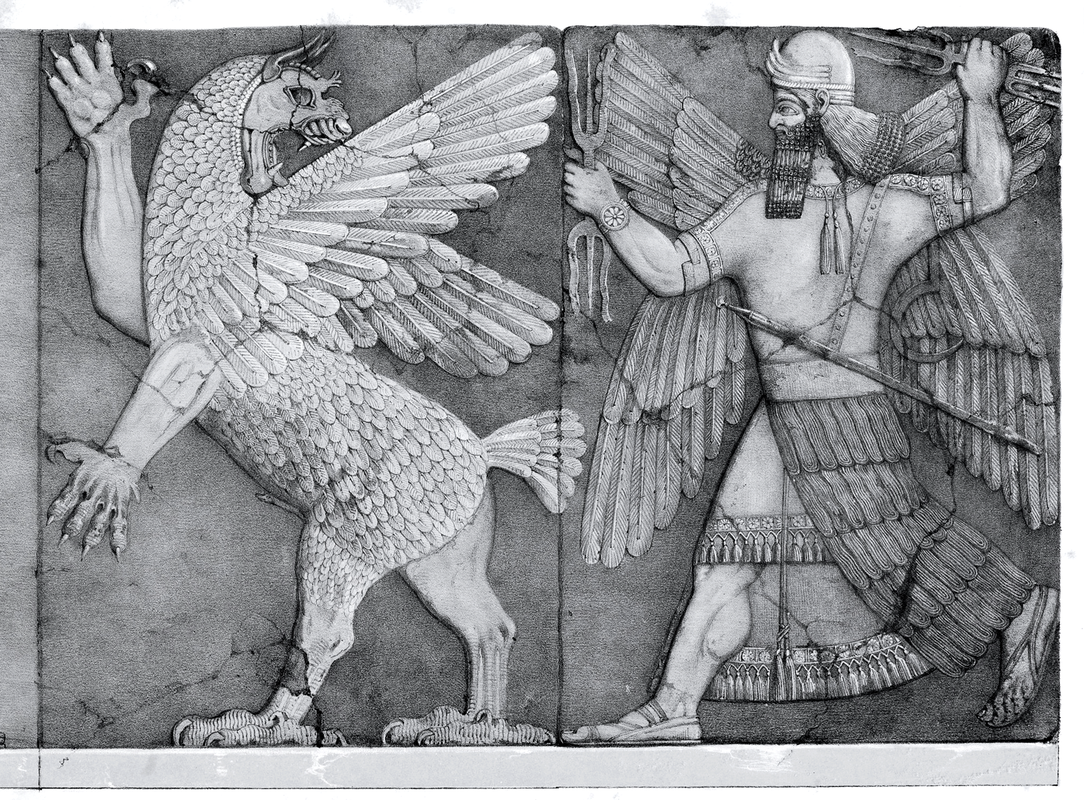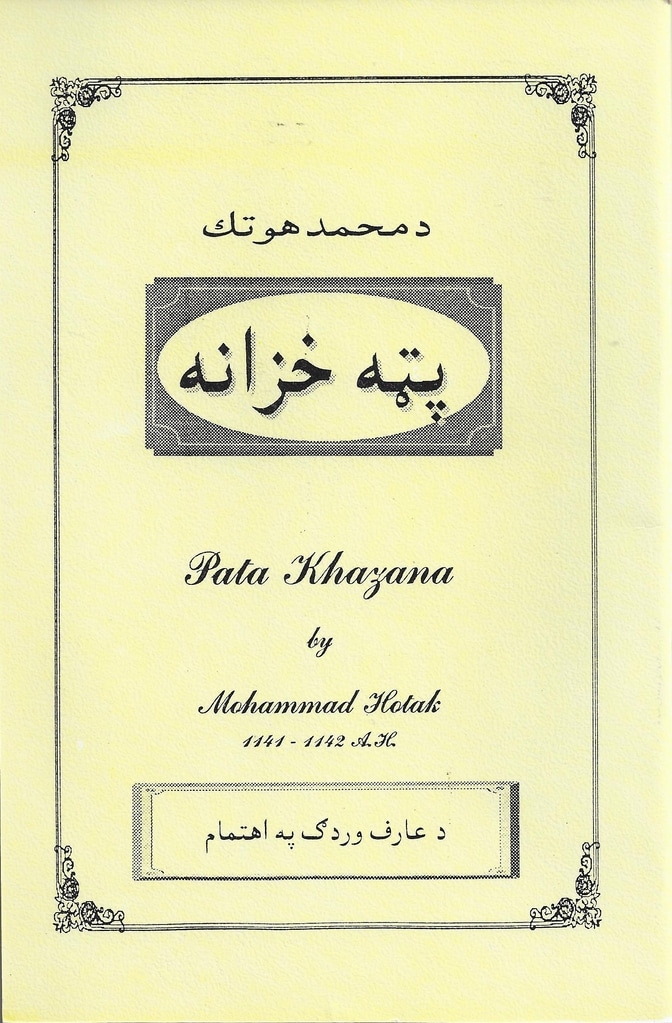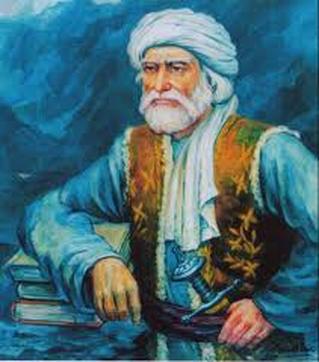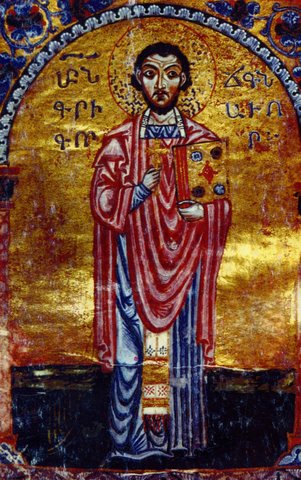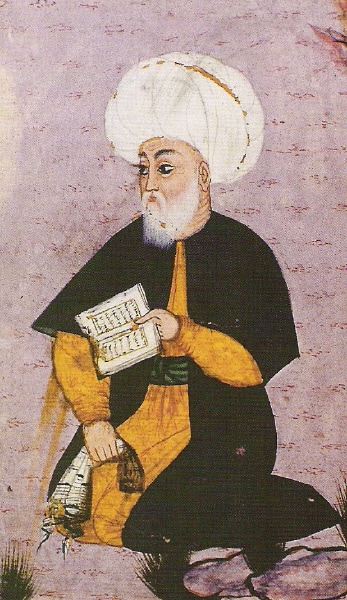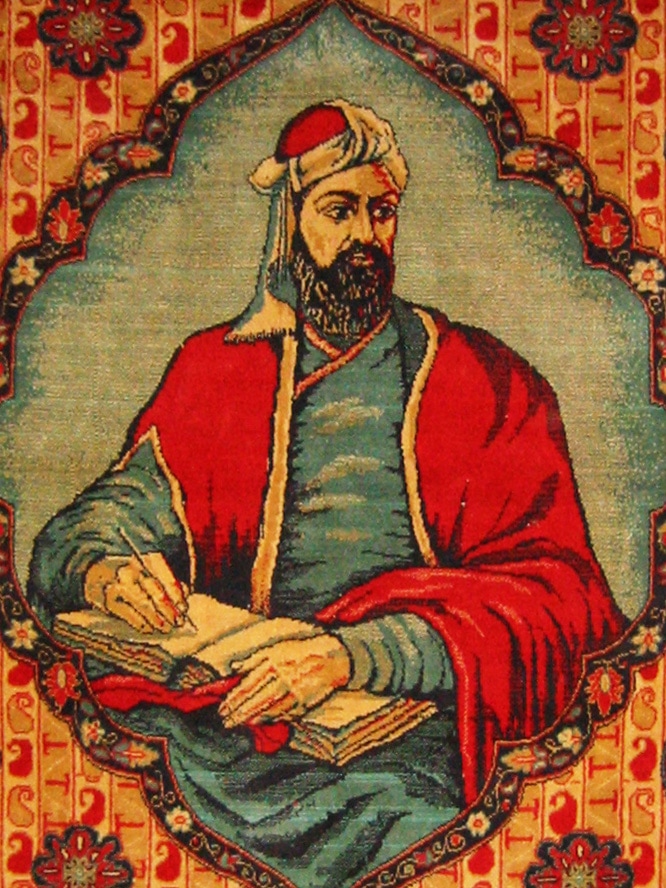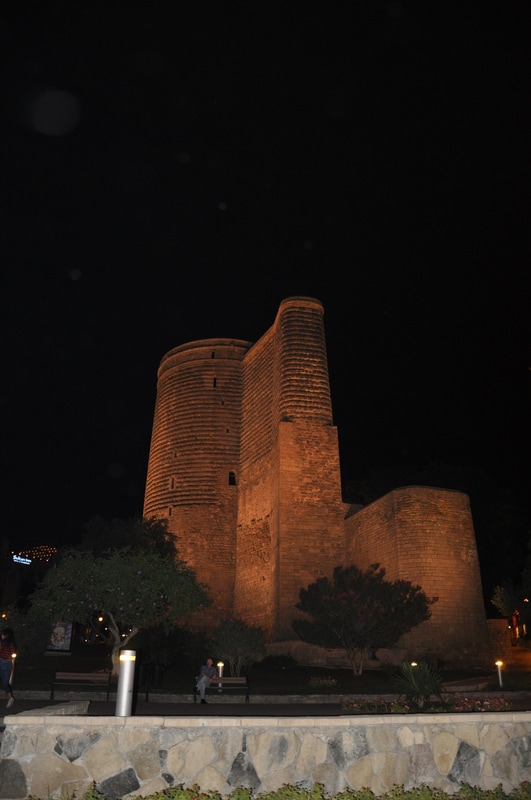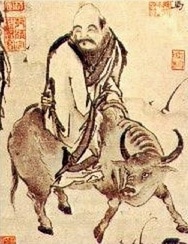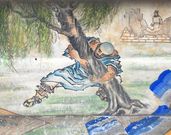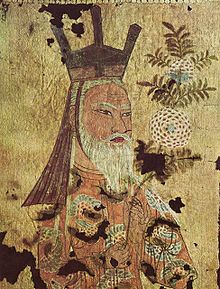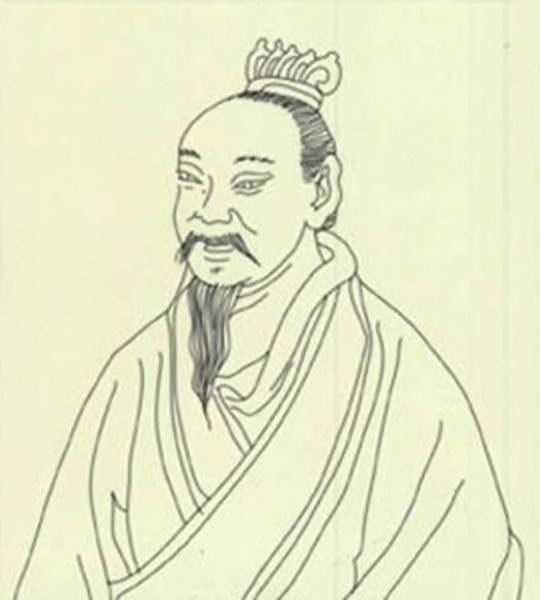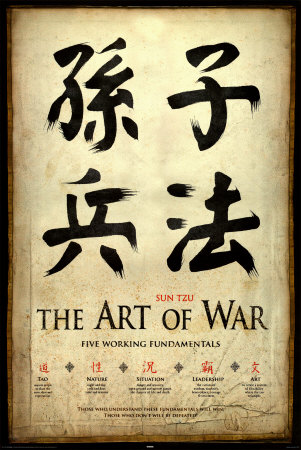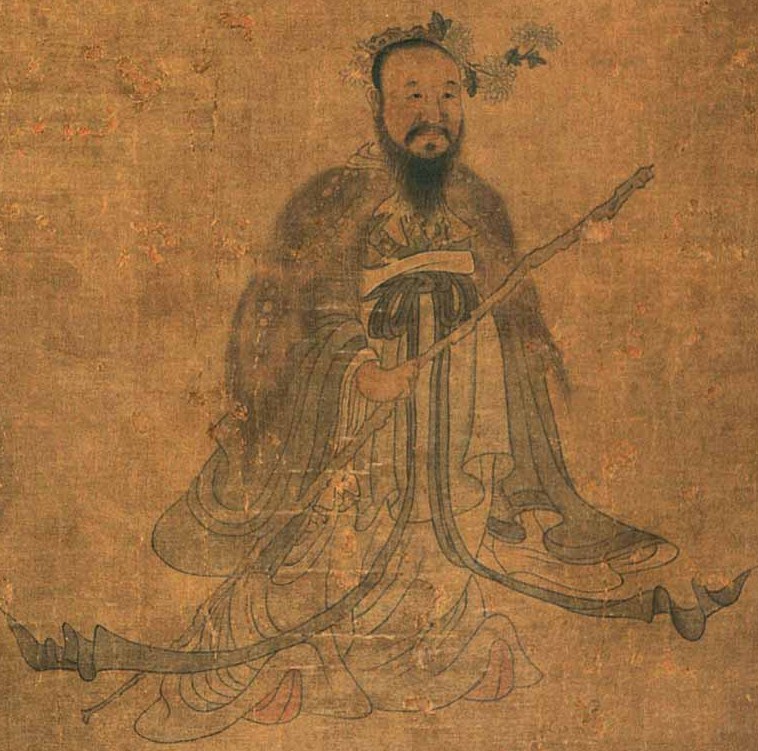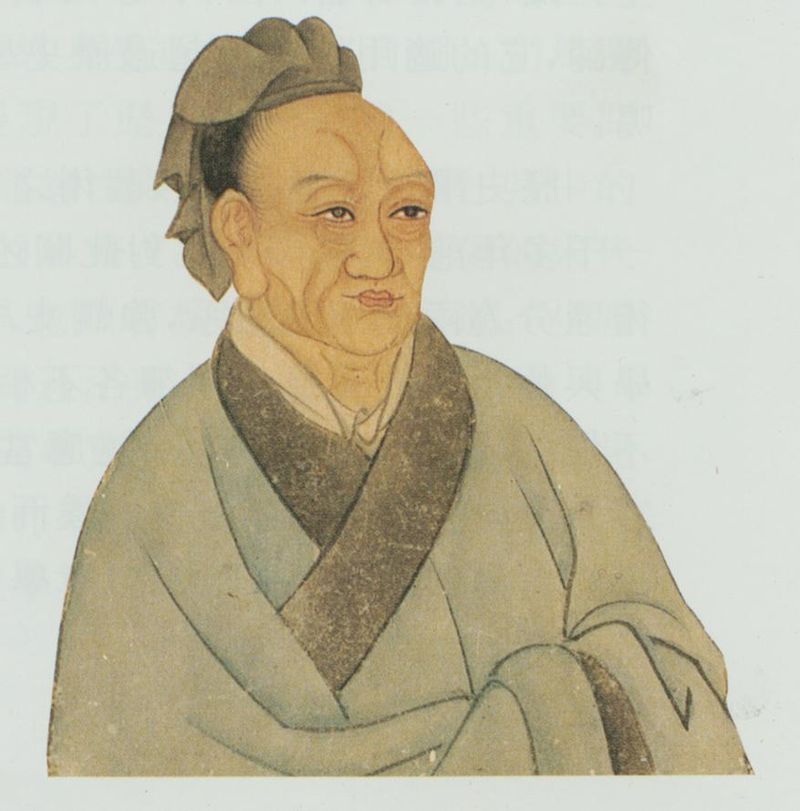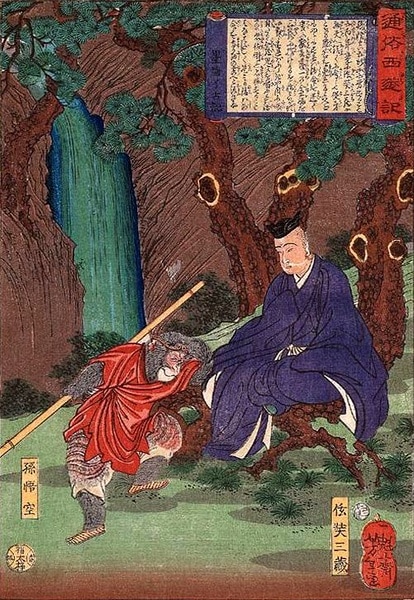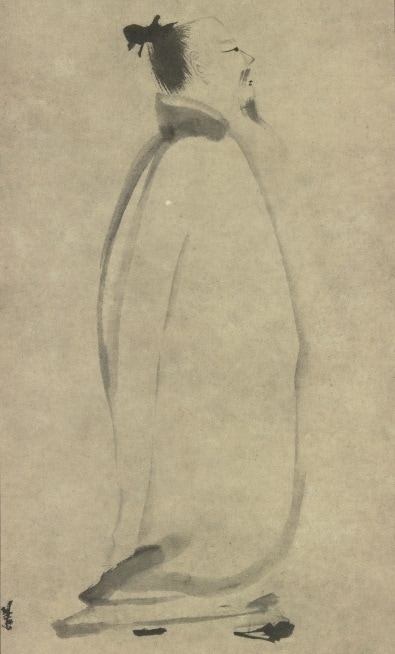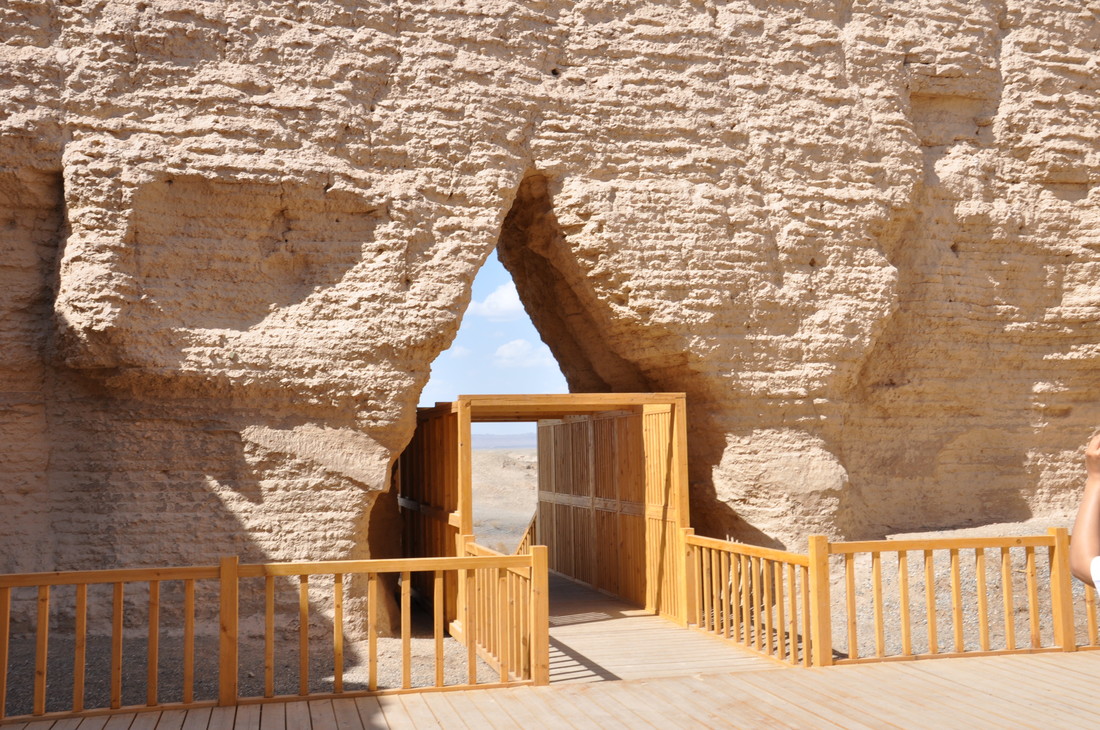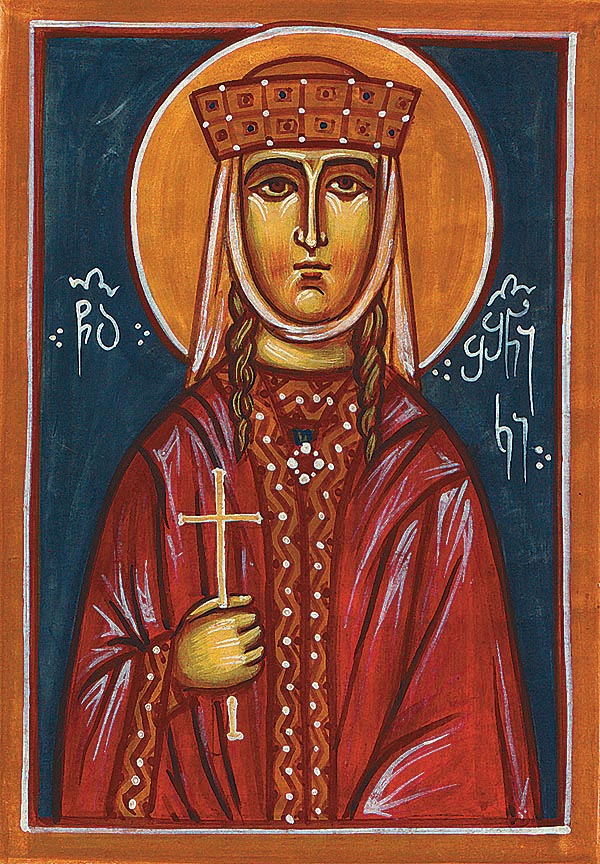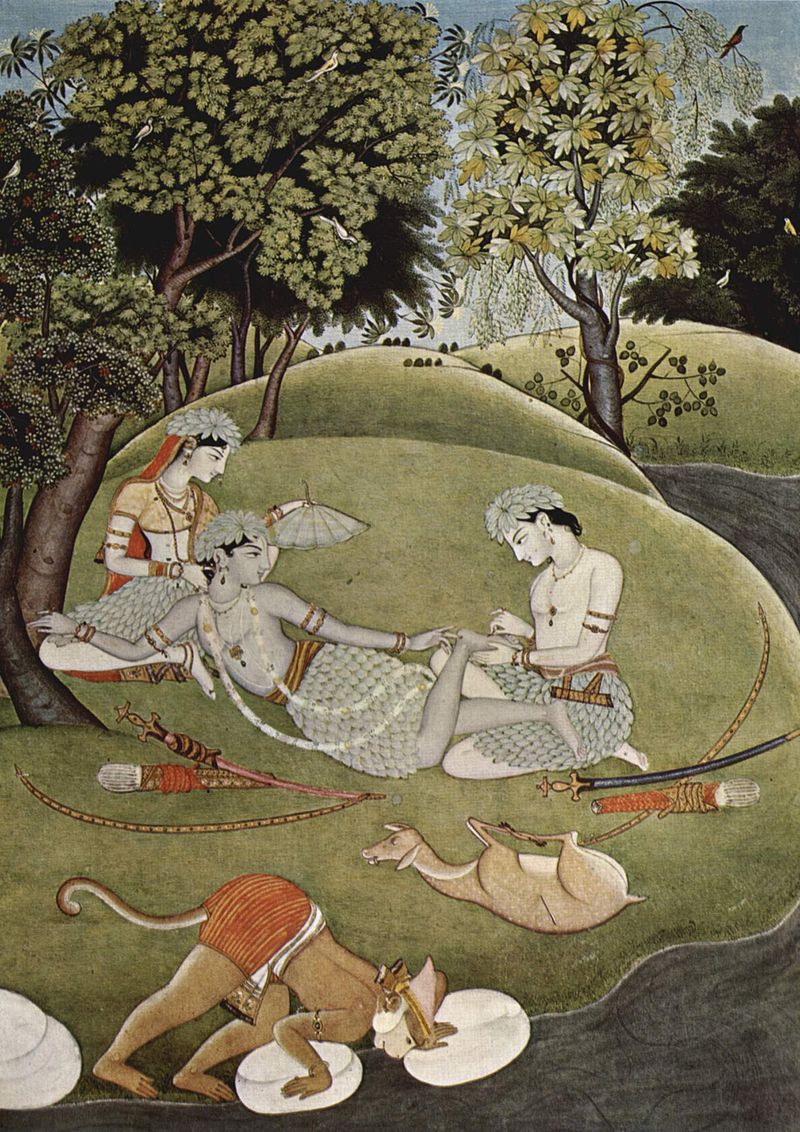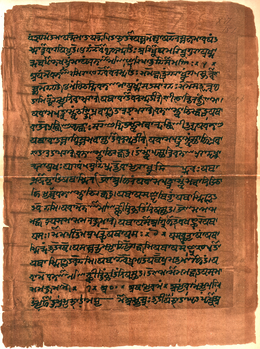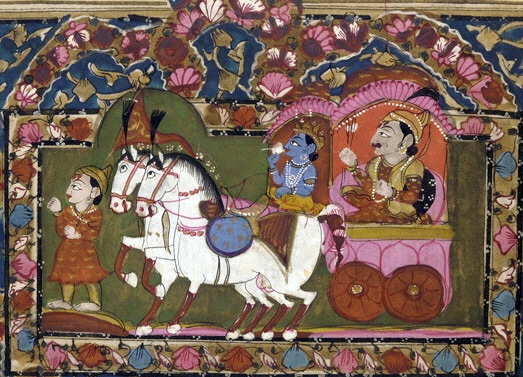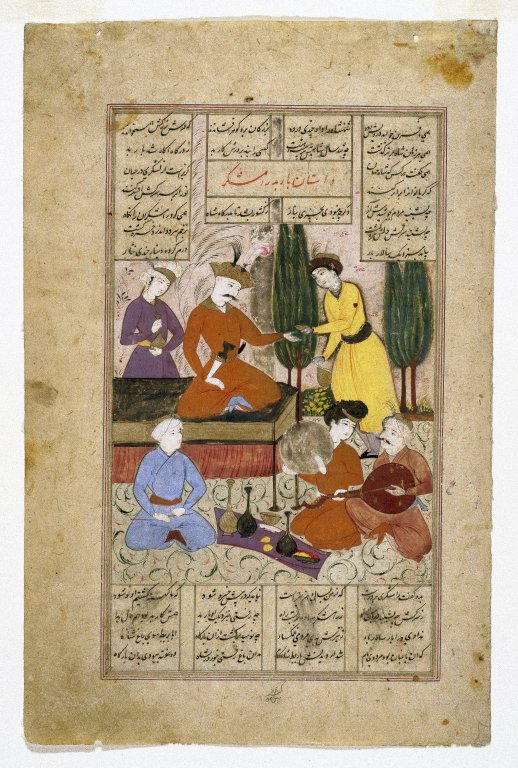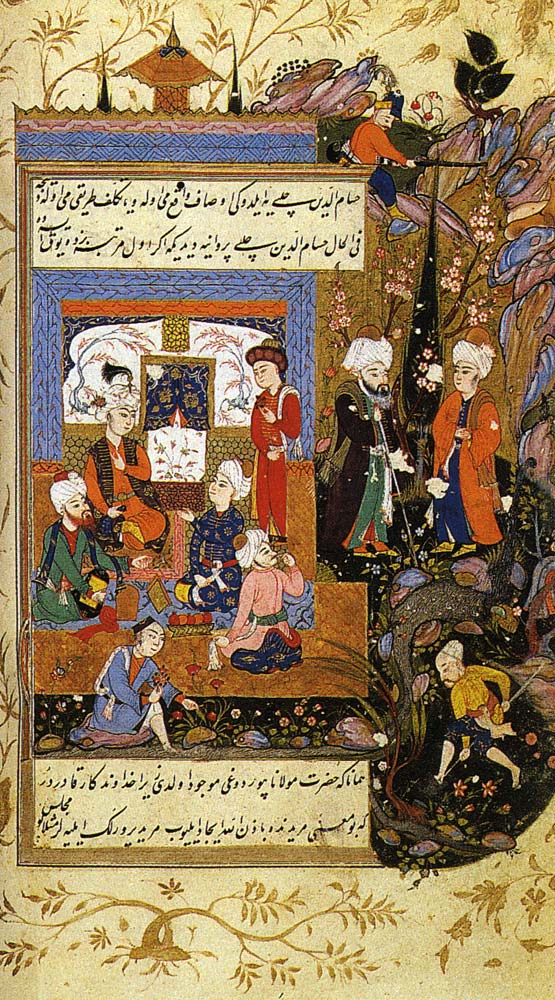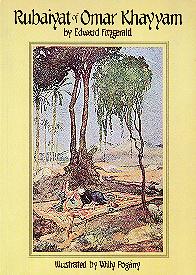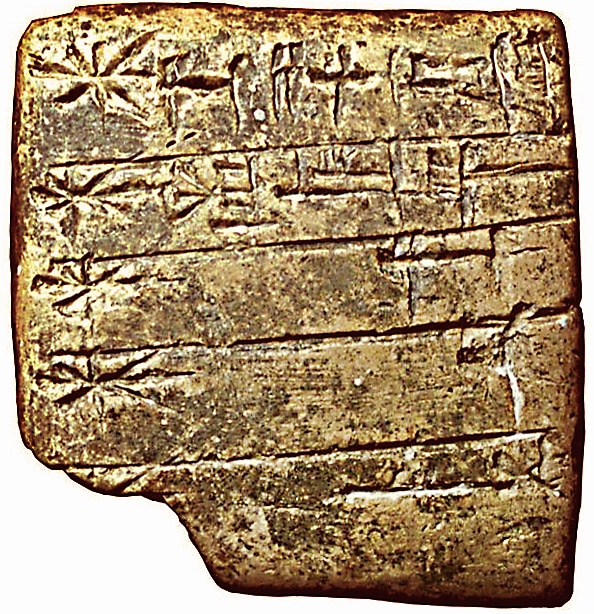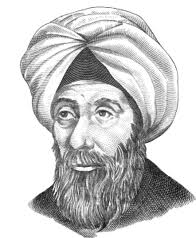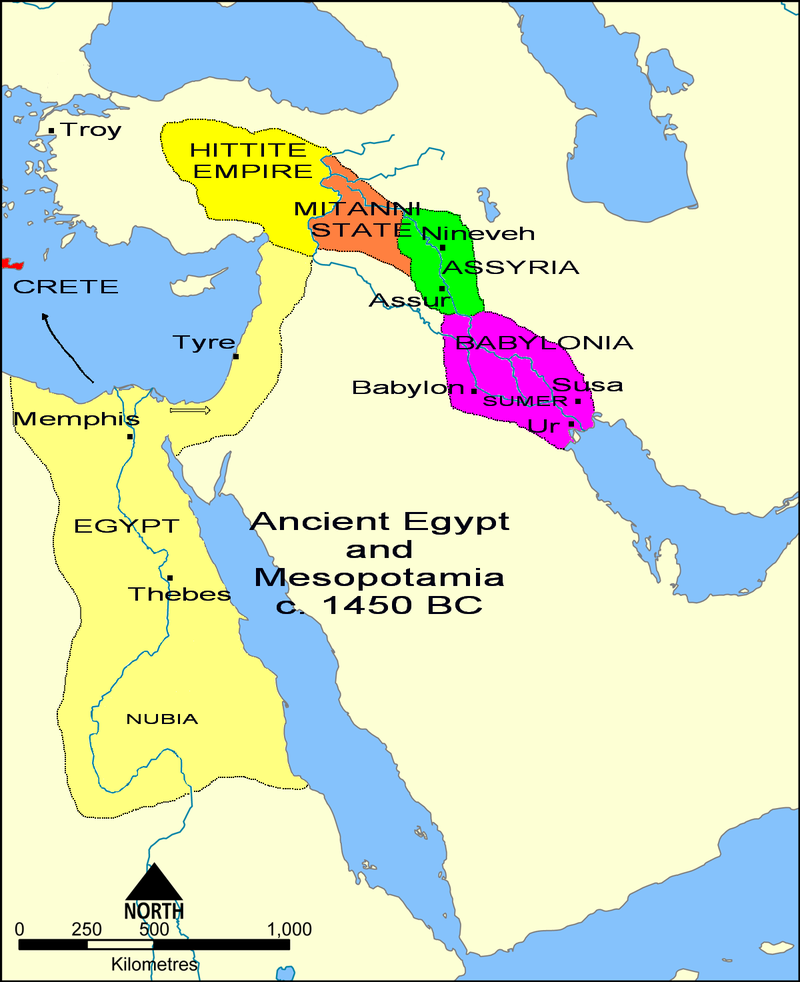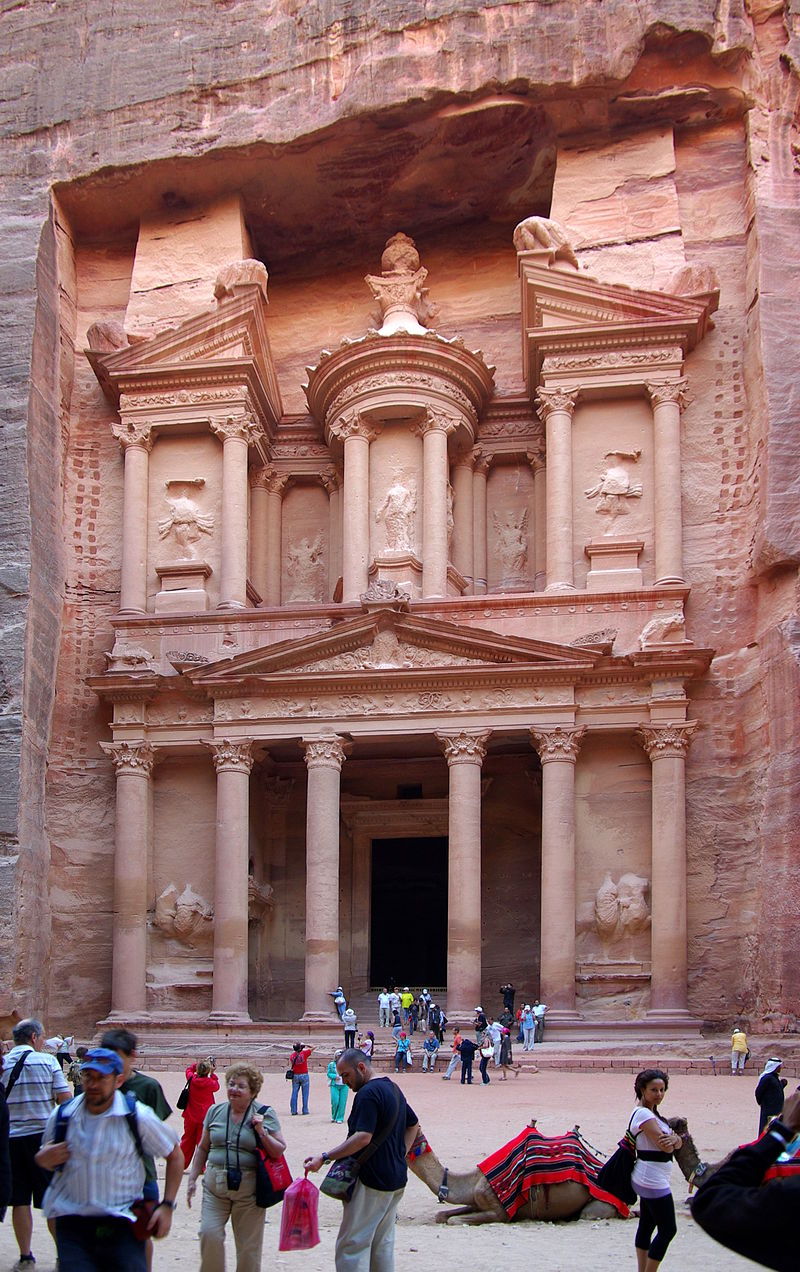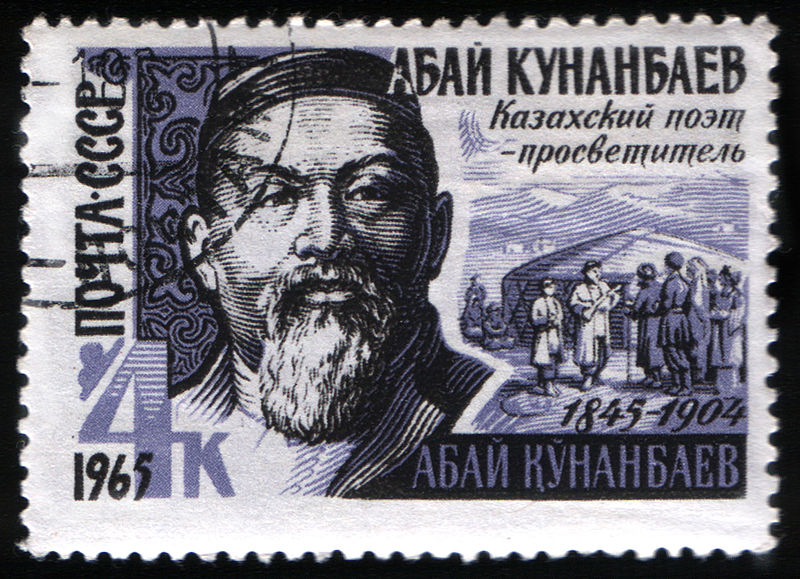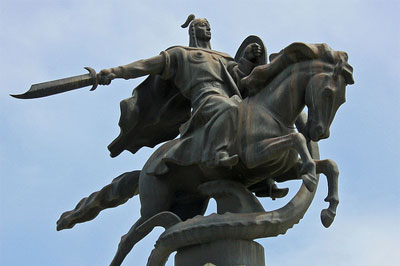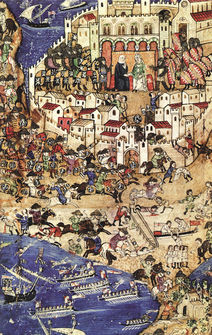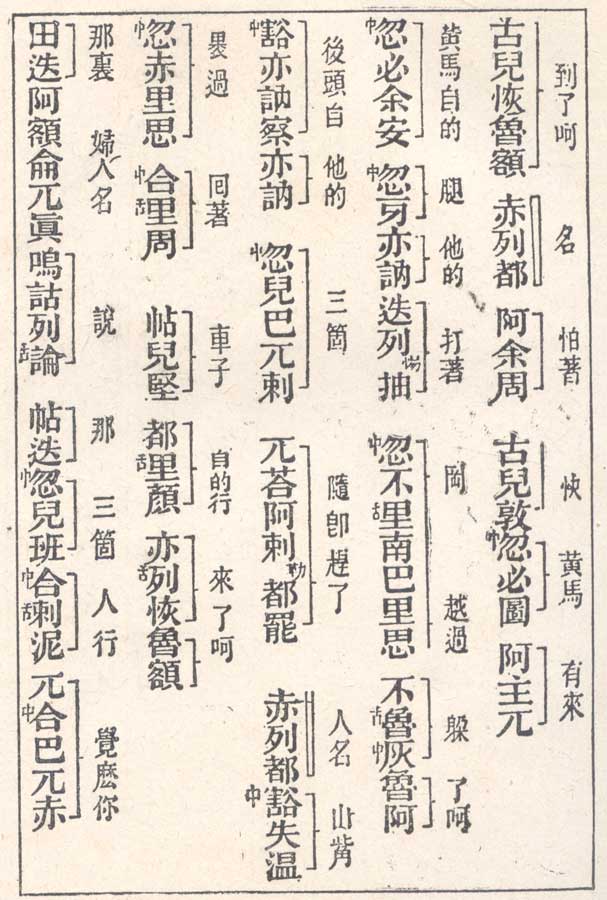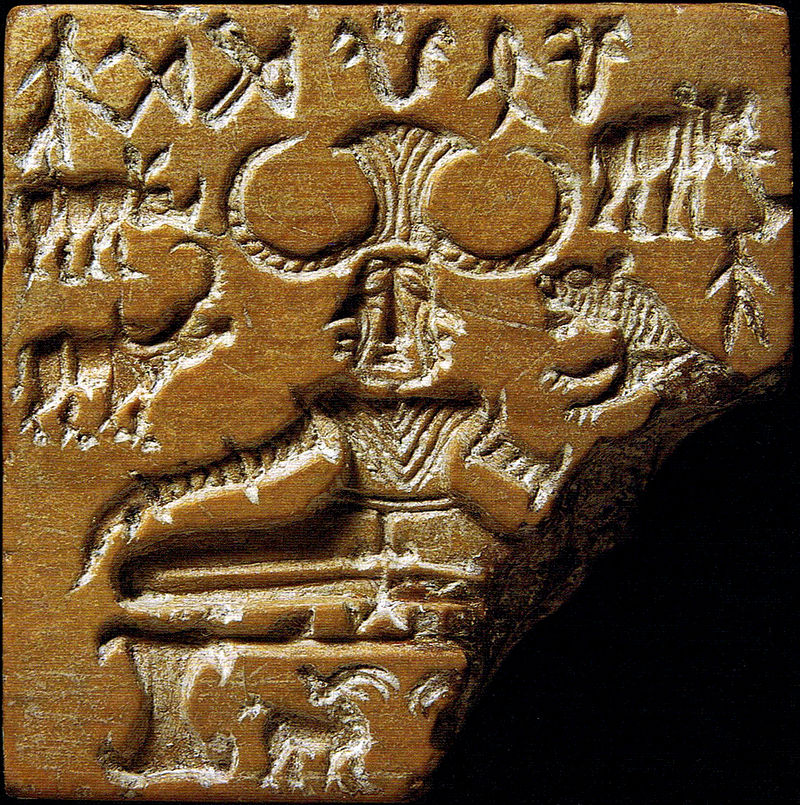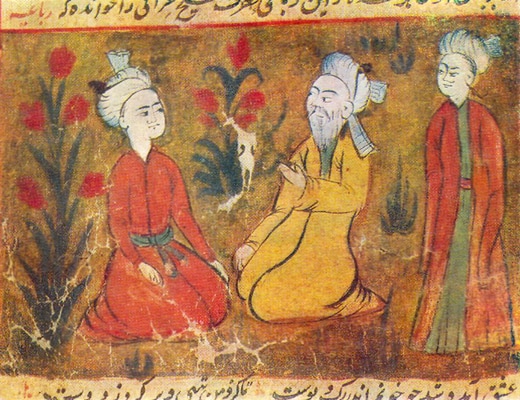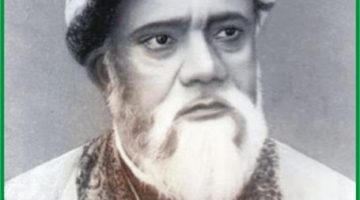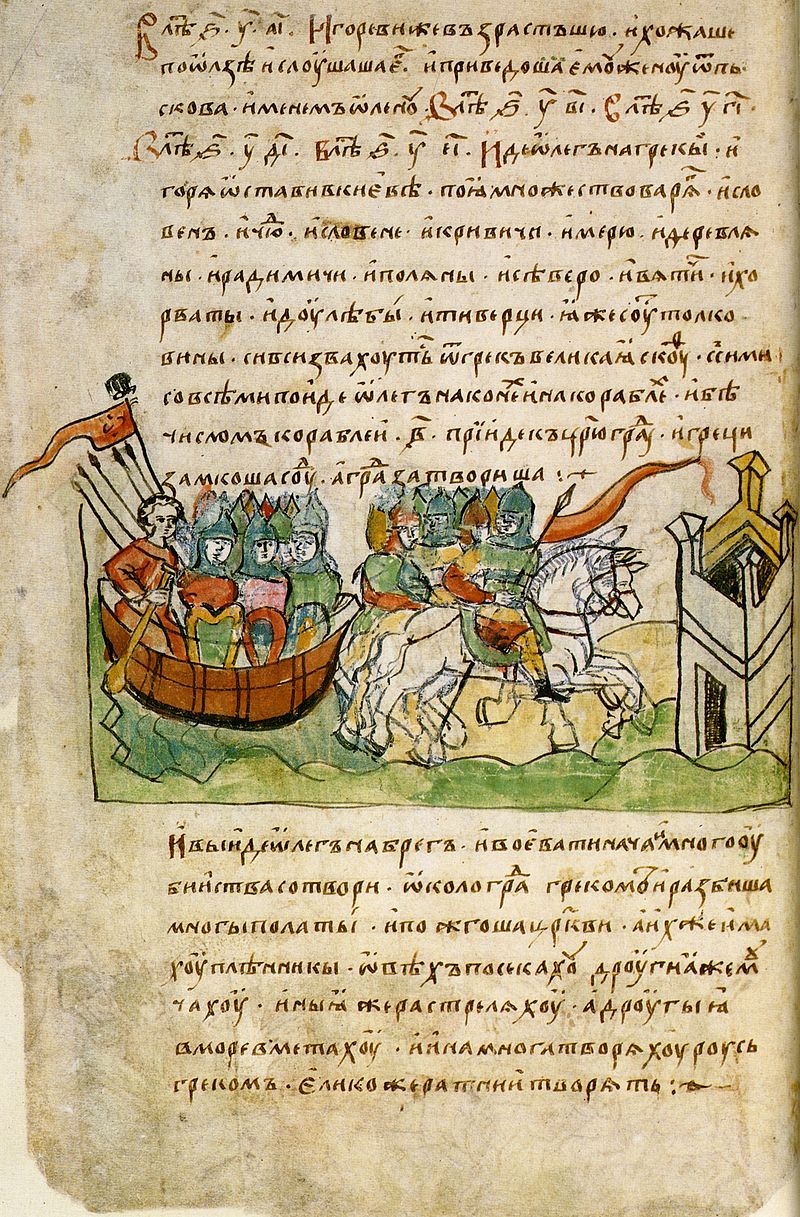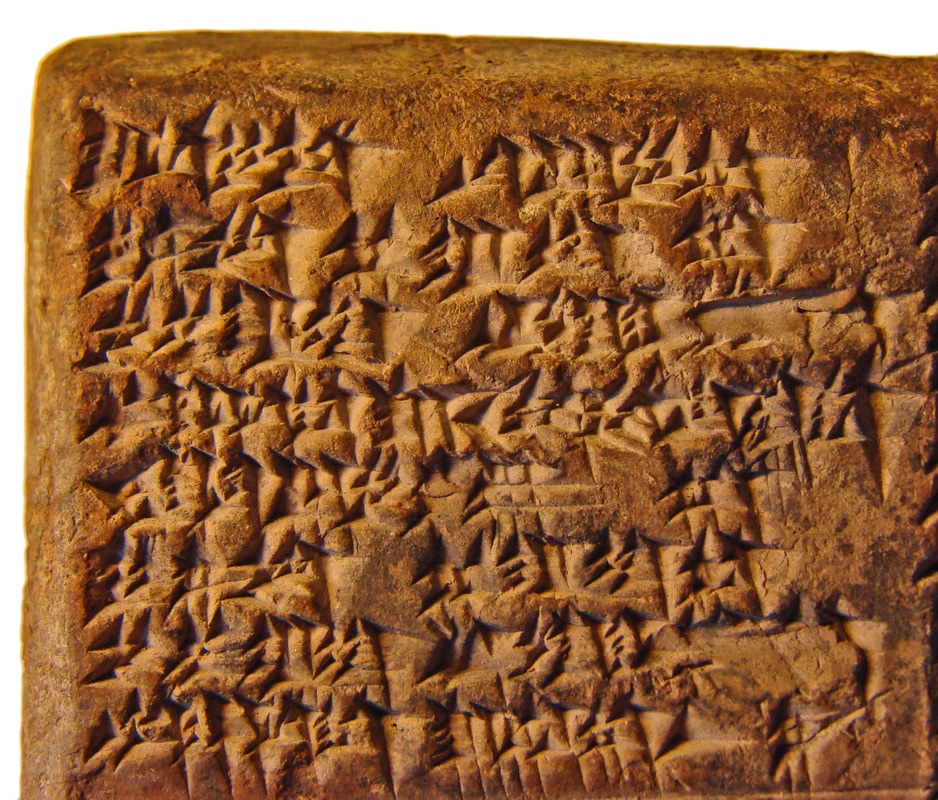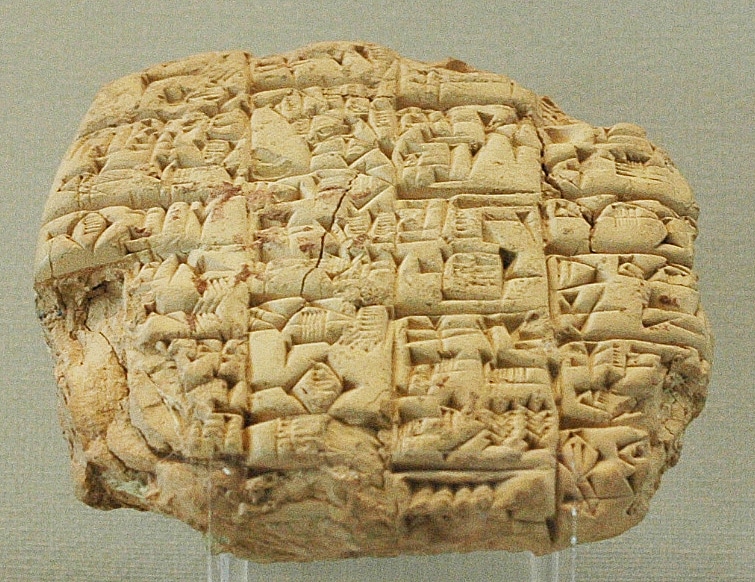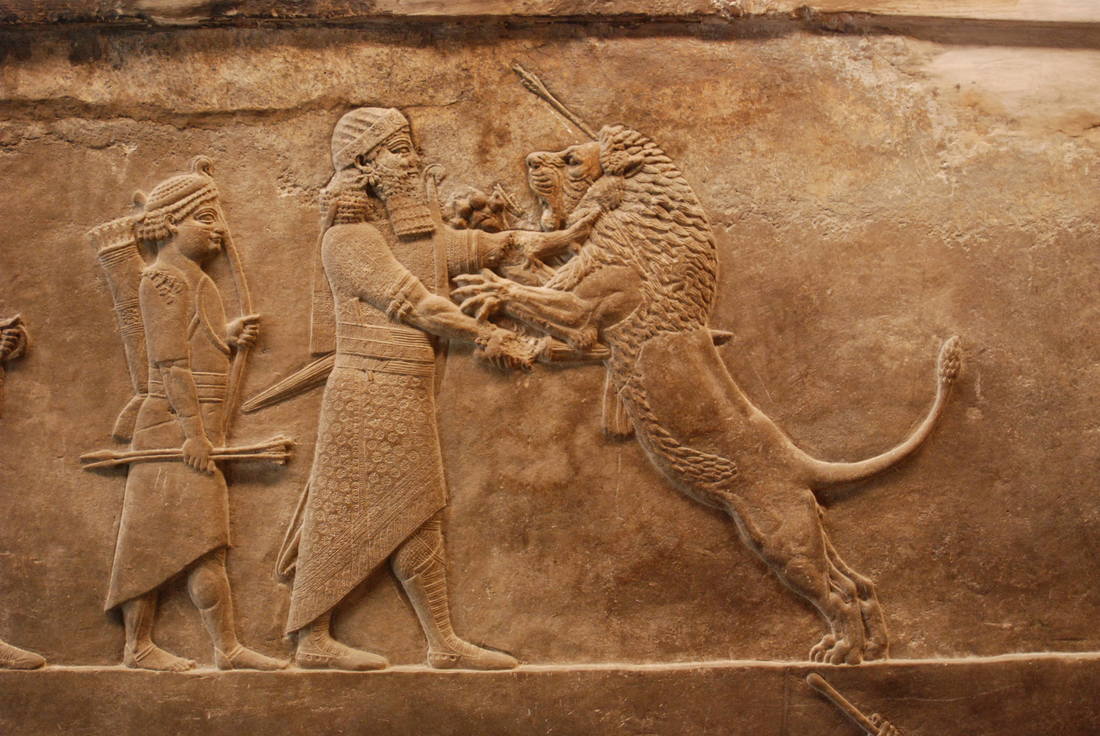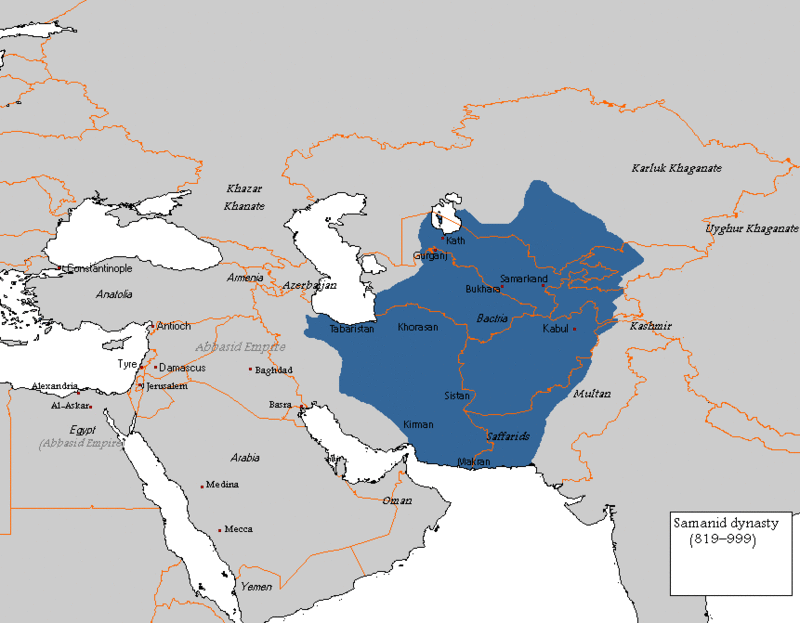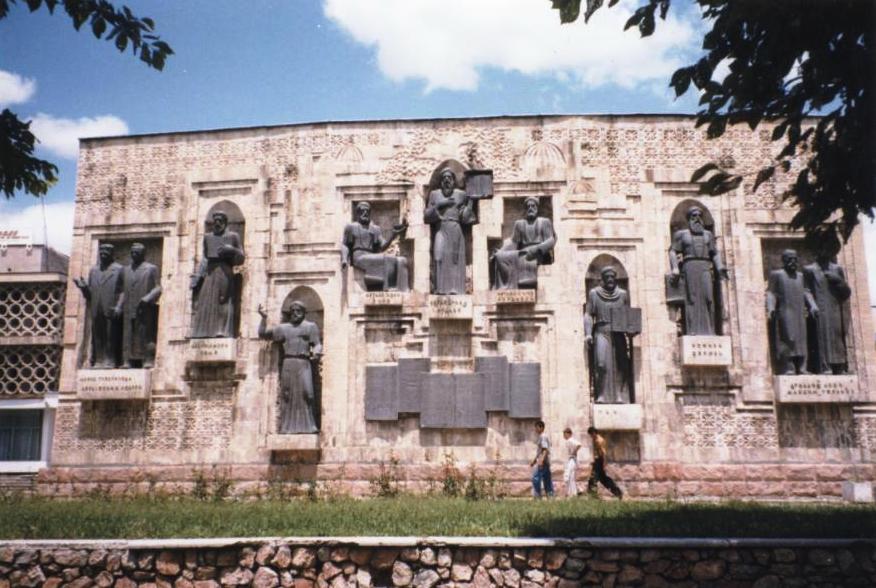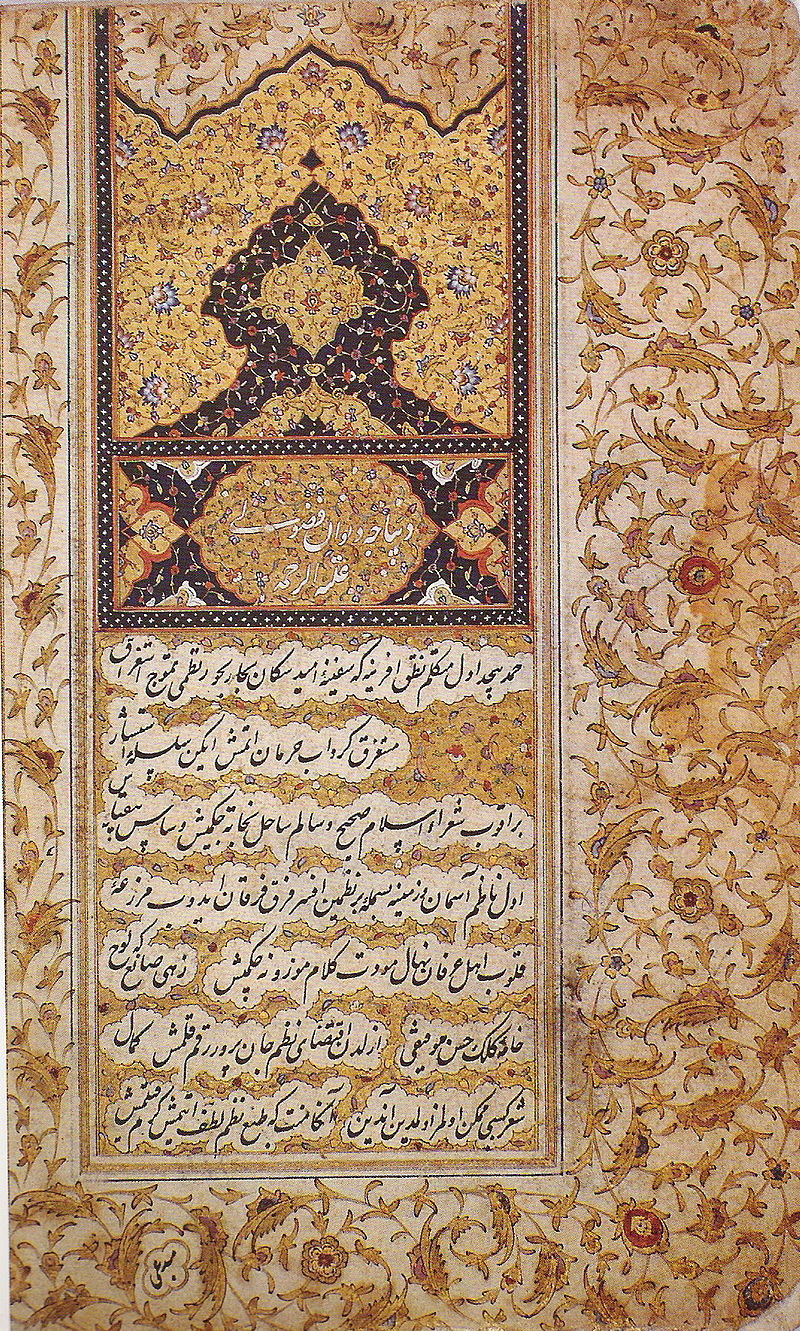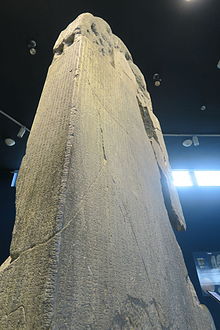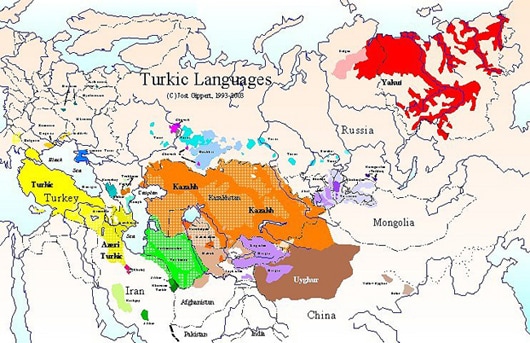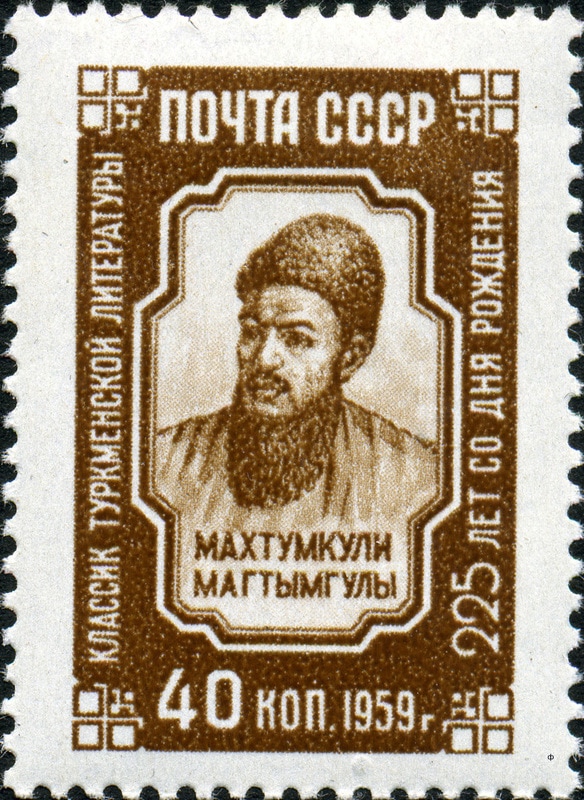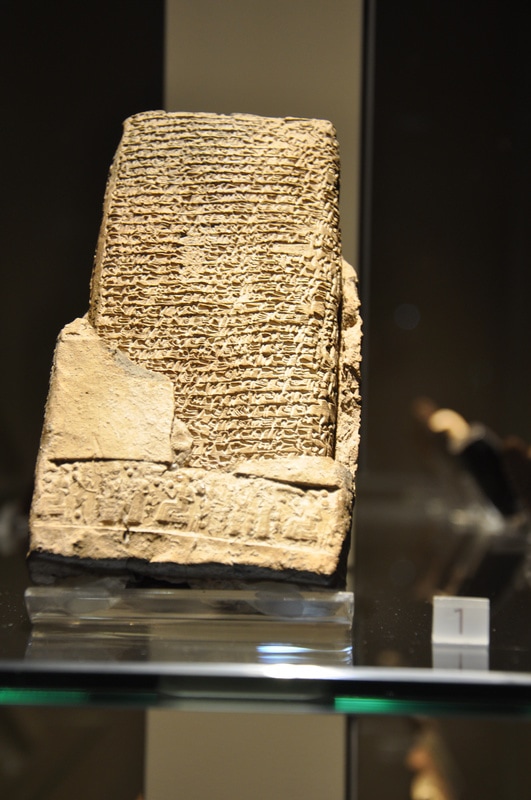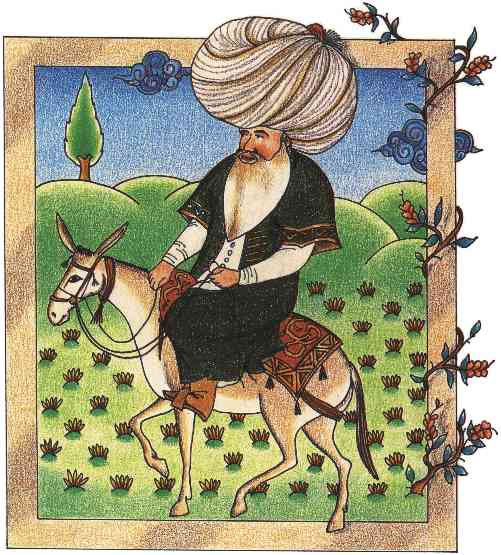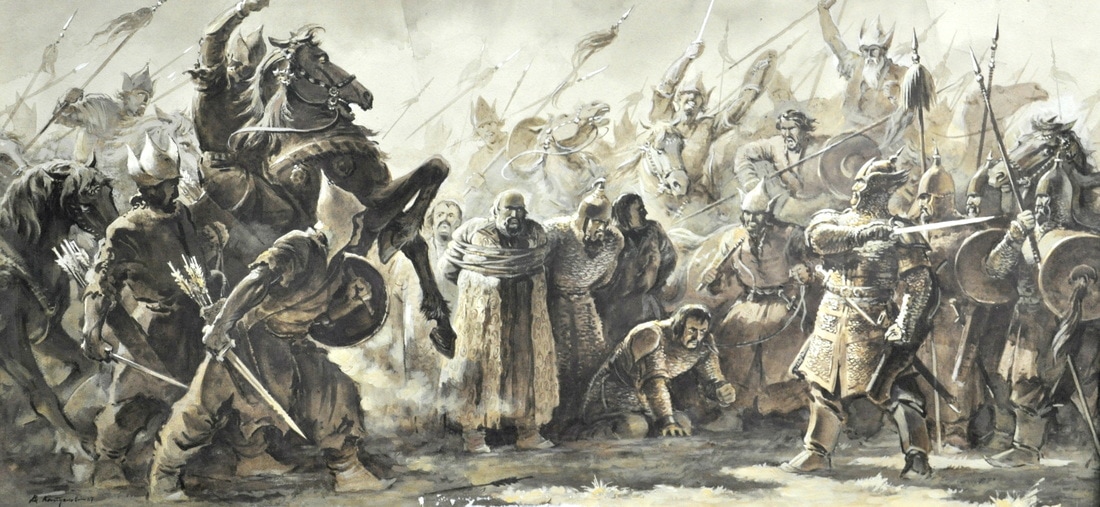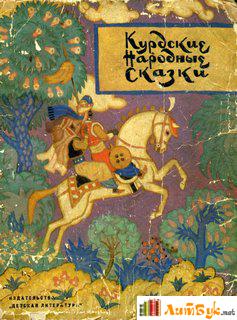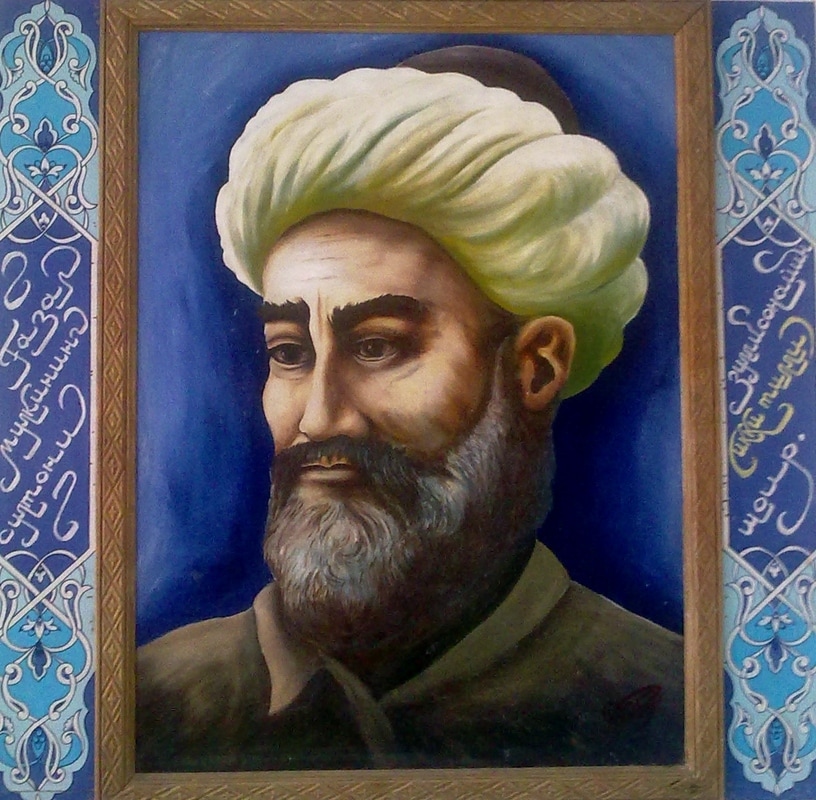|
AFGHANISTAN (Formerly known as Khorasan)
Pata Khazana – The Hidden Treasure, written in Pashto, is an anthology of Pashto poetry, which may have roots going back to about the 8th Century. https://books.google.com.hk/books?id=QsP9T48RnUEC&pg=PA32&dq=Pata+khazana&redir_esc=y#v=onepage&q=Pata%20khazana&f=false Amir Kror Suri (d. 771) also known as Jahan Pahlawan was the first king of Ghor, and according to the Peta Khazana was a renowned fighter, and first poet in the Pashto language. https://en.wikipedia.org/wiki/Amir_Kror_Suri Khushal Khan of the Khattak – Warrior and poet was born in the year 1022 of the Hijrah (ACE) 1613 e-books in Pashto, English and Urdu can be downloaded from: http://www.barmazid.com/2016/02/khushal-khan-khattak.html This site, titled: History of the Pashtuns, compiled by Khan Barmazid is EXCELLENT! Also see: http://www.afghan-network.net/biographies/khattak.html https://sites.google.com/site/pashtunheroes2/home/khushal-khan-khattak Rumi (Jalal ad-Din Muhammad Rumi, 1207-1273) was a 13th Century Persian Sunni Muslim poety, jurist, Islamic Scholar, Theologian and Sufi mystic. He was born in Balkh, present day Afghanistan, and is one of the most famous Muslim poets, and Muslim philosophers throughout the entire Central Asian Region. https://en.wikipedia.org/wiki/Rumi For some translations of Rumi’s poetry: http://www.khamush.com/poems.html http://peacefulrivers.homestead.com/rumipoetry1.html For a more complete list of poets from the land now called Afghanistan, see: https://en.wikipedia.org/wiki/Poetry_of_Afghanistan and https://en.wikipedia.org/wiki/Pashto_literature_and_poetry For a list of Afghan poets, selection of translations of Afghan poetry and contemporary poets: http://www.afghan-web.com/culture/poetry/ The oldest dated birch bark manuscripts are numerous Gandharan Buddhist texts from approximately the 1st century CE, believed to have originated in Afghanistan, likely by the Dharmaguptaka sect. Translations of the texts, mostly in Kharoṣṭhī, have produced the earliest known versions of significant Buddhist scriptures, including a Dhammapada, discourses of Buddha that include the Rhinoceros Sutra, Avadanas and Abhidharma texts. Sanskrit birch bark manuscripts written with Brahmi script have been dated to the first few centuries CE. Several early Sanskrit writers, such as Kālidāsa (c. 4th century CE), Sushruta (c. 3rd century CE), and Varāhamihira (6th century CE) mention the use of birch bark for manuscripts. https://en.wikipedia.org/wiki/Birch_bark_manuscript For other information on Afghan history, arts, libraries and museums, religion, ethnicity and languages, etc. see: http://www.afghanistans.com ∞ ∞ ∞ |
|
Armenia
Only a handful of fragments have survived from the most ancient Armenian literary tradition preceding the Christianization of Armenia in the early 4th century due to centuries of concerted effort by the Armenian Church to eradicate the “pagan tradition.” Christian Armenian literature begins about 406 with the invention of the Armenian alphabet by Mesrop for the purpose of translating Biblical books into Armenian. https://en.wikipedia.org/wiki/Armenian_literature Grigor Narekatsi 951 – 1011 (translated by Thomas J. Samuelian) http://www.armenianhouse.org/grigor-narekatsi/tenets.html http://www.stgregoryofnarek.am/ Armenian Poems http://www.armenianhouse.org/blackwell/armenian-poems/grigor-narekatsi.html ∞ ∞ ∞ |
|
Azerbaijan
Divining attribution in this region is a bit complex, as Persian/Turkic ethno/cultural/linguistic groups waxed and waned throughout this entire region for millennia. Yet… different individuals did hail from different lands and cities. Language is a clue… From the General Consulate of the Republic of Azerbaijan: “The 7th century epic (dastan), the “Book of Dede Qorqud” (Kitabi Dədə Qorqud), written in Azerbaijani, remains an original source for the culture and history of the Azerbaijani people. This dastan describes in 12 tales the struggle for freedom and independence by the Oghuz Turks, the ancestors of Azerbaijanis. Currently, two original manuscripts of the dastan are preserved in the Vatican Library and in the Saxon State Library in Dresden. The dastan has been translated into Russian, German, English, Persian, Georgian, Latvian, Serb, Hungarian and other languages (the English translation was provided by Geoffrey Lewis, which was published as ‘The Book of Dede Korkut’ by Penguin Classics in 1974). In 2000, on the initiative of Azerbaijan, the “1300th anniversary of the epic Azerbaijani legend Kitab-i Dede Qorqud” was celebrated by UNESCO.” http://www.azconsulatela.org/Azerbaijan/Culture/Literature The “Book of Dede Qorqud” in English can be downloaded from: https://docs.google.com/viewerng/viewer?url=http://media.turuz.com/Turkologi/Dedekorkut/2011/20-Book_of_Dede_Qorqud-ingilisce(51)(253KB).pdf (Registration is required – Amazing and powerful stories of the ancient world, love and treachery, honor and sacrifice; a treasury of stories of the real Silk Road.) Other classic literature from Azerbaijan: “In the Middle Ages, Azerbaijani poet Nizami created his world-famous Khamsa, and prominent poet Fuzuli was recognized across national and regional borders. His Leyli and Majnun is renowned as a literary gem. Another great exponent of Azerbaijani literature was Mirza Fatali Akhundov, who refined dramatic form for the Azerbaijani theatre in the 19th century. During the Soviet period, such brilliant Azerbaijani literary figures as Huseyn Javid, Ahmad Javad and Mikail Mushfiq fell victim to repression by the Soviet regime. Samad Vurgun, Suleyman Rustam, Ilyas Efendiyev and Mammad Said were particularly renowned. The Azerbaijani poet Shahriyar was of great importance to Azerbaijani and Iranian literature. Ali and Nino, by Azerbaijani émigré writer Gurban Said, is famous across the world. Modern-day literary figures are Bakhtiyar Vahabzada, Anar and others. Chingiz Abdullayev has become internationally recognised for his gripping detective novels and short stories.” http://www.teas.eu/culture-and-art English Translation of the Khamsa of Nizami (Mirror of the Invisible World, Tales from the Khameseh of Nizami) can be downloaded from: http://www.columbia.edu/itc/mealac/pritchett/00ghalib/texts/txt_chelkowski_1975_nizami.pdf (This is an illuminating work, even in English, transcendent in feeling, beauty, love, the fickleness of fate, and the wickedness of evildoers. This version also contains some of the original artwork. Excellently done Columbia University!) Manuscript of Khamsa of Nizami can be seen at: https://www.agakhanmuseum.org/collection/artifact/manuscript-khamsa-quintet-nizami# Article about A Khamsa of Nizami Dated Herat, 1421 by Norah M. Titley can be downloaded from: http://www.bl.uk/eblj/1978articles/pdf/article15.pdf Article about Nizami: http://www.visions.az/en/news/271/a3e8bd5c/ Mahammad Fuzuli (1494-1556) His three great collections (Divans) are in these languages, but the most famous is the 4,000 couplet-long rendering of the Middle East favorite Leili and Mejnun in Azeri Turkish. "Fuzuli is one of the greatest Azeri-Turkish poets. His real name is Muhammed Süleyman Oğlu (poet’s name and patronymic) and it is generally believed that he was born around in 1495 or 1498 in Kerbela (in the area presently known as Iraq). We know almost nothing of the childhood and early youth of Fuzuli. He belonged to the Turkic tribe of Bayat, one of the Turcoman tribes that was scattered in all over the Middle East, Anatolia and the Caucasus from the 10th to 11th century and which has roots connected to the Azerbaijanian people. Although Fuzuli’s ancestors were of nomadic origin, his family had long been town-dwellers. At that time, the area where Fuzuli lived was a part of the Azerbaijanian Safavid Dynasty (1501-1736) headed by the leader of the Turcoman Shiites, Shah Isma’il I (r. 1502-1524)." http://www.turkishculture.org/literature/literature/poetry/fuzuli-work-english-634.htm?type=1 (Some excerpts of his Leili and Mejnun infinitely sweet, fragrant, sharp and passionate thwarted love story/poetry can also be found on this page as well. Also in regards to Mahammad Fuzuli see: http://www.textetc.com/traditional/fuzuli.html. Some of his other poems can be found amongst this amazing collection of Ottoman Turk poetry translations: http://www.ottomansouvenir.com/General/Turkish_Poetry.htm Shah Ismayil I (1486-1524) Though born in Northwest Iran, he threw out the Arab rulers of eight and a half centuries, and conquered what is now Azerbaijan avenging his father Haydar Safavi who was killed by the Shirvanshah king Furruk Yassar in battle, as well as Armenia, most of Georgia, the North Caucasus, Iraq, Kuwait and Afghanistan, as well as parts of Syria, Pakistan, Uzbekistan and Turkmenistan. Thus, he was technically Azerbaijani, just as the Yuan Dynasty was indeed Chinese. Some of his poetry can be found along with his story here: http://www.shiachat.com/forum/topic/235020699-the-poetry-of-shah-ismail-i/ His, is warrior poetry. Ismail was also a prolific poet who, under the pen name Khaṭāʾī (which means "sinner" in Persian), contributed greatly to the literary development of the Azerbaijani language. He also contributed to Persian literature, though few of his Persian writings survive. https://en.wikipedia.org/wiki/Ismail_I Also see: https://www.academia.edu/19497980/Messianic_Oeuvres_in_Interaction_Misattributed_Poems_by_Shah_Ismail_and_Nesimi “The 17th century gave rise to the heroic-romantic folk epics “Ashiq Garib”, “Shah Ismayil” and “Koroghlu”. Classical poetry was democratized through the influence of folk poetry of the 17th century. In the 18th century the most important currents in lyric poetry were determined by two great poets. The poetry of Vidadi (1709-1809) gave greater emphasis to social motifs, while the works of Vagif (1717-1797) are imbued with optimism for the future of the people.” http://www.azconsulatela.org/Azerbaijan/Culture/Literature A short history of Azerbaijan by Yagub Mahumdlu, can be downloaded from: http://elibrary.bsu.az/yenii/ebookspdf/orqI08Z1.pdf The antiquity of the civilization in what is now Azerbaijan cannot be understated as this book states: “The old ethnic groups of this region contributing to the emergence of the Azerbaijani people led to the formation of the ancient cultural environment and Sumerian-Babylonian civilization and played a very important role in the history of ancient state system and politic-military life in the regions of the Middle and Near East. The main traces of civilization are viewed in Azerbaijan. This is evidently displayed by the scholarly researches, especially by the archeological excavations within and outside Azerbaijan. The ancient monuments spread all over Azerbaijan amply prove that this land was one of the oldest habitations of the mankind. The discovery of Azykh cave, one of the earliest habitations of man to be found in the world, and a number of other habitations of the ancient Stone Age prove that Azerbaijan enters the zone of anthropoids to reveal the birthplace of mankind. The archeological discoveries at the caves of Qazma (Nakhichevan), Azykh, Taghs, Damjili, Dashsalahli as well as in the monuments found elsewhere in the country pertaining to 300-400 millennia BC, together with the unearthing of the remains of lower jaw bone of the first Homo sapiens in Azerbaijan conclusively ascertain the evolution theory as to how the human formation had taken place. In view of these rare discoveries, the Azerbaijan territory has been included in the map of Europe's oldest inhabitants.” ∞ ∞ ∞ |
|
CHINA
“The Hundred Schools of Thought (Chinese: 諸子百家/诸子百家; pinyin: zhūzǐ bǎijiā; Wade-Giles: chu-tzu pai-chia; literally "all philosophers hundred schools") is the name given to philosophers and schools that flourished from 770 to 221 B.C.E., an era of great cultural and intellectual expansion in China. Even though this period, known in its earlier part as the Spring and Autumn period and the Warring States period (春秋戰國時代) in its latter part, was characterized by chaos and bloody battles, it is also known as the Golden Age of Chinese philosophy because a variety of thoughts and ideas were freely developed and discussed. This phenomenon has been called the “Contention of a Hundred Schools of Thought” (百家爭鳴/百家争鸣; bǎijiā zhēngmíng; pai-chia cheng-ming; “hundred schools contend”).” http://www.newworldencyclopedia.org/entry/Hundred_Schools_of_Thought Below are just a few of the 100 Schools: CONFUCIANISM Chinese “Classic Texts” defined as originating before the Qin Dynasty (221 BCE) are called Zhōngguó gǔdiǎn diǎnjí. They are summarized as the Four Books and the Five Classics. The Four Books of Confucianism are Chinese classic texts that Zhu Xi selected in the Song Dynasty as an introduction to Confucianism. They were in the Ming and Qing Dynasties made the core of the official curriculum for the civil service examinations The Five Classics were compiled or edited by Confucius himself (551-479 BC). The Four Books are: The Great Learning, the Doctrine of the Mean, the Analects of Confucius, and The Mencius (Mengzi) anecdotes and conversations of Mencius, a disciple of Confucius. The Four books can be downloaded here: http://www.holybooks.com/the-four-books/ (James Legge Translation) http://academics.hamilton.edu/asian_studies/home/culttemp/sitepages/fiveclassics.html (Other translations) http://www.cnculture.net/ebook/jing/Vol.4-1.pdf The Five Classics are the
TAOISM is a cornerstone – the origin and deepest root of Chinese philosophy and literature:
https://ttc.tasuki.org/display:Year:1972,1988,1996,2004/section:1 20+ Translations of the Dao Te Ching can be found here: http://www.daoisopen.com/ddjtranslations.html For translations with historical context see: https://terebess.hu/english/tao/_index.html MOHISM – Mozi – considered by many to be the originator of the concept of “Universal Love” Read online: http://ctext.org/mozi LEGALISM – Advocated strict rule “Legalism is a network of ideas concerning the art of statecraft. It looks at the problems of the Warring States period entirely from the perspective of rulers (although the authors of Legalist texts were not themselves rulers, but rather men who wished to be employed by rulers as their counselors and ministers).” http://www.indiana.edu/~p374/Legalism.pdf ; http://law.nus.edu.sg/sjls/articles/SJLS-2005-313.pdf MILITARY SCIENCE – The Seven Military Classics
CLASSIC NOVELS OF CHINA The “Four Great Classical novels” of Chinese Literature are:
After 206 BCE there were the Twenty-Four Histories with the Records of the Grand Historian by Sima Qian starting the series of histories for various dynasties. http://www.chinaknowledge.de/Literature/Historiography/ershiwushi.html The list of China’s greatest classic literature and philosophy goes on almost indefinitely. Fifty lifetimes would not be enough to read and grasp them completely. POETS OF CHINA (Just a sampling, hardly a complete list) Qu Yuan (343 BC-278) was unquestionably one of the greatest poets in world history. He was author of the anthology Chu Ci, or Songs of the South, and Shi Jing, or Classic of Poetry, also called the Book of Songs, though perhaps his most famous poem was “The Lament” which chastens corruption. After his exile upon the order of the king, he is said to have committed suicide by way of jumping in a river to protest corruption. A small part of “The Lament” “Three ancient kings there were so pure and true That round them every fragrant flower grew; Cassia and pepper of the mountain-side With melilotus white in clusters vied. Two monarchs then, who high renown received, Followed the kingly way, their goal achieved. Two princes proud by lust their reign abused, Sought easier path, and their own steps confused. The faction for illicit pleasure longed; Dreadful their way where hidden perils thronged. Danger against myself could not appall, But feared I lest my sovereign's scepter fall.” http://www.shigeku.org/xlib/lingshidao/hanshi/quyuan.htm Cao Cao (155 - 220) http://kongming.net/poetry/caocao/ Cao Zhi (191-232) (Son of Cao Cao) https://en.wikipedia.org/wiki/Cao_Zhi Wang Bo (649-676) One of the “Four Paragons of early Tang.” http://chinesepoemsinenglish.blogspot.hk/2014/11/wang-bo-in-mountains.html Farewell To Vice-Prefect Du Setting Out For His Official Post In Shu By Wang Bo "By this wall that surrounds the three Qin districts, Through a mist that makes five rivers one, We bid each other a sad farewell, We two officials going opposite ways…. And yet, while China holds our friendship, And heaven remains our neighborhood, Why should you linger at the fork of the road, Wiping your eyes like a heart-broken child?" http://www.chinawhisper.com/top-10-most-influential-chinese-poems-in-history/ https://en.wikipedia.org/wiki/Wang_Bo_(poet) Wang Wei (699-761) http://www.chinese-poems.com/wang.html http://www.chinese-poems.com/wwe.html Li Bai (Li Po, 701 - 762) Even his biography is poetic: “A Chinese poet of the Tang Dynasty, Li Po (also known as Li Bai, Li Pai, Li T’ai-po, and Li T’ai-pai) was probably born in central Asia and grew up in Sichuan Province. He left home in 725 to wander through the Yangtze River Valley and write poetry. In 742 he was appointed to the Hanlin Academy by Emperor Xuanzong, though he was eventually expelled from court. He then served the Prince of Yun, who led a revolt after the An Lushan Rebellion of 755. Li Po was arrested for treason; after he was pardoned, he again wandered the Yangtze Valley. He was married four times and was friends with the poet Tu Fu.” https://www.poetryfoundation.org/poems-and-poets/poets/detail/li-po http://wengu.tartarie.com/wg/wengu.php?no=-1&l=Tangshi&auteur=Li_Bai http://www.chinese-poems.com/lb.html “The bright moon lifts from the Mountain of Heaven In an infinite haze of cloud and sea, And the wind, that has come a thousand miles, Beats at the Jade Pass battlements.... China marches its men down Baideng Road While Tartar troops peer across blue waters of the bay.... And since not one battle famous in history Sent all its fighters back again, The soldiers turn round, looking toward the border, And think of home, with wistful eyes, And of those tonight in the upper chambers Who toss and sigh and cannot rest.” http://wengu.tartarie.com/wg/wengu.php?no=38&l=Tangshi Editor’s note: I visited Jade Gate (April 2017), Yumenguan last month in Gansu Province. It was at that time, the end of the civilized world in Chinese eyes, the gate through which exiles and soldiers left, often or usually never to return. Looking westward is appears a most forbidding and desolate land. This poem reflects some realities of the soldiers’ life. Du Fu (712-770) Along with Li Bai, Du Fu is considered one of the greatest of Chinese poets and a philosopher sage. Many of his poems feature history and morality. He lived through tumultuous times, specifically the An Lushan Rebellion of 755, and was no stranger to personal tragedy, yet his poetry reflected not his own sorrow as the state of mankind at that time in China. https://en.wikipedia.org/wiki/Du_Fu http://www.chinese-poems.com/due.html The two poems posted at the link below (Pounding the Clothes, and Farewell to my Soldier-Friend) by Du Fu refer to the soldier going to the Great Wall, and Yang Pass. Yangguan Pass is near Yumenguan referred to above, the Western end of the Great Wall at that time. https://www.poetryfoundation.org/poetrymagazine/browse?contentId=27298 Su Song (1020-1101) Su Shi (1037-1101) Tang Yin (1470-1524) Cao Xueqin (1715-1763) Xu Zhimo (1897-1931) Lu Xun (1881-1936) And so many more… http://www.chinawhisper.com/top-10-most-influential-chinese-poems-in-history/ http://www.chinese-poems.com/ http://media.leidenuniv.nl/legacy/2Historic_and_cultural_background.pdf http://www.chinawhisper.com/top-10-most-influential-chinese-poems-in-history/ The Bower Manuscript is one of the oldest Sanskrit texts on birch bark in the Brāhmī script. It includes several texts covering subjects including a medical treatise and proverbs. It was discovered in Kucha (currently in Aksu Prefecture in Xinjiang, China), an ancient Buddhist kingdom on the northern Silk Road, and is estimated to be from around 450 CE. https://en.wikipedia.org/wiki/Birch_bark_manuscript ∞ ∞ ∞ |
|
GEORGIA
“Georgian literature starts with the fifth century hagiographic work, The Martyrdom of the Holy Queen Shushanik. The hagiographic works, historical chronicles and hymns are followed by that gem of twelfth century secular literature The Knight in the Panther’s Skin. It anticipates the historical-cultural epoch of the fourteenth to fifteenth century, the European Renaissance with its humanistic ideals, and furthermore, contemporary European ideas (“The lion’s whelps are equal, be they male or female”). “It is unimaginable to speak of Georgian Christian culture without mentioning the Georgian translation school that started in the ninth to tenth centuries in the Mount Athos Iveron Monastery, and developed alongside European culture. It produced translations of Western and Eastern literary masterpieces, the originals of which are often lost and scholars study them based on their Georgian translations. From the nineteenth to twentieth centuries, Georgian literature absorbed and evoked all Western traditions: realism, symbolism, Dadaism, futurism, absurdism etc. at the same time Georgian drama and theatre evolved.” http://book.gov.ge/uploads/tinymce/files/Catalogue_2014.pdf The first printed version (of Martyrdom of the Holy Queen Shushanik) was published in 1882. It has been translated into Russian, French, English, German, Spanish, Hungarian and Icelandic. In 1979, UNESCO marked the 1500-anniversary of the Martyrdom of the Holy Queen Shushanik. An English language summary can be found here: http://www.pravoslavie.ru/english/7318.htm Copy of the Georgian text can be found at: http://www.theeuropeanlibrary.org/exhibition-reading-europe/detail.html?id=110539 The Man in the Panther’s Skin – A Romantic Epic, by Shhotha Rusthaveli is a delightful tale The poem was first printed in 1712 in Tblisi and is a secular love epic set in fictionalized versions of Arabia, Persia, India and fairy-tale lands set in the environs of the Indian Ocean. It can be downloaded free from Berkley.edu https://www.ocf.berkeley.edu/~shorena/PDF/Rustaveli_trans_MW.pdf or read online at http://sacred-texts.com/asia/mps/mps00.htm In regards to Georgian Literature and Poetry, also see: https://www.britannica.com/art/Georgian-literature & http://www.iranicaonline.org/articles/georgia-iv--1 ∞ ∞ ∞ |
|
INDIA
The Vedas There are four Vedas, the Rig Veda, Sama Veda, Yajur Veda and Atharva Veda. The Vedas are the primary texts of Hinduism. They also had a vast influence on Buddhism, Jainism, and Sikhism. Traditionally the text of the Vedas was coeval with the universe. Scholars have determined that the Rig Veda, the oldest of the four Vedas, was composed about 1500 B.C., and codified about 600 B.C. It is unknown when it was finally committed to writing, but this probably was at some point after 300 B.C. http://sacred-texts.com/hin/index.htm The four Vedas can be read online at this site. A beautiful pdf translation of the Vedas can be downloaded from https://archive.org/details/FourVedasEnglishTranslation https://ia801308.us.archive.org/25/items/FourVedasEnglishTranslation/Four-Vedas-English-Translation.pdf The Ramayana is one of the two epic Hindu poems, the other being the Mahabharata. The Ramayana describes a love story between Rama, an ancient King, and Sita, who is captured by Ravan, the King of Ceylon. Rama lays siege to Ceylon and wins back Sita. The parallels to the Iliad are obvious, but the details are very different. Read Online: http://www.sacred-texts.com/hin/rama/index.htm Another free online translation has extensive very useful notes: http://valmikiramayan.net/ http://www.vivekananda.net/PDFBooks/The_Ramayana.pdf The Mahabharata – (From Wikipedia:) The Mahābhārata is an epic narrative of the Kurukṣetra War and the fates of the Kaurava and the Pāṇḍava princes. It also contains philosophical and devotional material, such as a discussion of the four "goals of life" or puruṣārtha (12.161). Among the principal works and stories in the Mahābhārata are the Bhagavadgītā, the story of Damayantī, an abbreviated version of the Rāmāyaṇa, and the story of Ṛṣyasringa, often considered as works in their own right. Download free all volumes in 12 pdf files: http://www.holybooks.com/mahabharata-all-volumes-in-12-pdf-files/ xxx Buddhist sutras can be downloaded from: http://www.buddhasutra.com/ http://www.buddhanet.net/ebooks_s.htm Also see: The Authenticity of Early Buddhist Texts: http://ocbs.org/wp-content/uploads/2015/09/authenticity.pdf The famous poet and playwright Kālidāsa wrote one epic: Raghuvamsha (Dynasty of Raghu) ; it was written in Classical Sanskrit rather than Epic Sanskrit. https://en.wikipedia.org/wiki/Indian_literature#Classical_Sanskrit_literature http://sanskritdocuments.org/sites/giirvaani/giirvaani/rv/intro_rv.htm The most notable Prakrit languages were the Jain Prakrit (Ardhamagadhi), Pali, Maharashtri and Shauraseni. https://en.wikipedia.org/wiki/Indian_literature#Classical_Sanskrit_literature One of the earliest extant Prakrit works is Hāla's anthology of poems in Maharashtri, the Gāhā Sattasaī, dating to the 3rd to 5th century CE. Kālidāsa and Harsha also used Maharashtri in some of their plays and poetry. In Jainism, many Svetambara works were written in Maharashtri. https://en.wikipedia.org/wiki/Indian_literature#Classical_Sanskrit_literature http://www.kamat.com/kalranga/kar/literature/history1.htm BABUR-NAME http://elegalix.allahabadhighcourt.in/elegalix/ayodhyafiles/hondvsj-ann-4-p1.pdf ∞ ∞ ∞ |
COVID-19, Coronavirus, Islam, Silk Road, university, education, free, mooc, archeology, traditional, library, research, travel, photography, science, art, engineering, psychology, philosophy, religion, medicine, learning, desertification, ecology, hope, degree, ecology
|
ISLAMIC REPUBLIC OF IRAN - Ancient Persia
Shah nameh (Book of Kings), the great epic poem completed in 1010 by the Persian poet Firdawsi, which consists of 60,000 rhyming couplets in Dari. Farid al-Din Attar (1119 -1220) Attar was one of the most ancient and highly revered poets of Persia. He inspired later Sufi poets, such as Rumi (See Afghanistan) and Hafiz. Born in Nishapur in northeastern Persia around 1142, he traveled widely, Tehran, Egypt, Damascus, Mecca, and Turkestan, then settled in Nishapur. He worked as a herbalist and was branded a heretic. Downloadable translations: http://www.poetry-chaikhana.com/Poets/A/AttarFaridud/index.html Some of Attar’s and other Sufi poets words can be read online at: http://www.poetseers.org/spiritual-and-devotional-poets/sufi-poets/attar/ The Conference of the Birds (Mantiq al-Tair) is one of his most famous and illuminating works: https://en.wikipedia.org/wiki/The_Conference_of_the_Birds http://onetruename.com/attar.htm Three Butterflies by Attar "All of us are in reality like three butterflies We're the fable , in the lover's oasis The first came near the candle and said : ' I've discovered the meaning of love ' The second fluttered its wing near the flame and said : ' I've been burned by the fire of love ' The third threw himself into the fire Yes ... Yes ... This is the meaning of love ..." / Attar From: The Three Butterflies by Attar: http://www.allthelyrics.com/forum/showthread.php?t=114885 Rubaiyat by Omar Khayaan The Rubaiyat of Omar Khayyam has been translated into many languages including English, French, German, Italian, Russian, Chinese, Hindi, Arabic, and Urdu. http://www.okonlife.com/poems/page1.htm (Comparative translations are presented.) Online English and Dutch new translations: http://home.kpn.nl/hansvanrossum/rubaiyat2.html (My preferred translation - SRU Editor) Download Edward Fitzgerald’s Translation (1905) via PDF, Kindle, and other options: https://archive.org/details/rubaiyatfitzgera00omar https://ebooks.adelaide.edu.au/o/omar_khayyam/o54r/ Also see: https://en.wikipedia.org/wiki/Rubaiyat_of_Omar_Khayyam Ancient Babylonian Medicine – Theory and Practice (free pdf download – 236 pages): https://ia902705.us.archive.org/17/items/AncientBabylonianMedicine/AncientBabylonianMedicine.pdf Old Persian Cuneiform: https://en.wikipedia.org/wiki/Old_Persian_cuneiform ∞ ∞ ∞ |
|
Iraq
The land now called Iraq may have the largest & oldest written literature on earth. https://en.wikipedia.org/wiki/Akkadian_literature “Sumerian is the first language for which we have written evidence and its literature the earliest known. The Electronic Text Corpus of Sumerian Literature (ETCSL), a project of the University of Oxford, comprises a selection of nearly 400 literary compositions recorded on sources which come from ancient Mesopotamia (modern Iraq) and date to the late third and early second millennia BCE. “The corpus contains Sumerian texts in transliteration, English prose translations and bibliographical information for each composition. The transliterations and the translations can be searched, browsed and read online using the tools of the website.” http://etcsl.orinst.ox.ac.uk/ http://etcsl.orinst.ox.ac.uk/edition2/etcslsitemap.html Gilgameš and Ḫuwawa (Version A) http://etcsl.orinst.ox.ac.uk/cgi-bin/etcsl.cgi?text=t.1.8.1.5# http://www.jasoncolavito.com/epic-of-gilgamesh.html The Folk-Tales of Iraq and the Literary Traditions of Ancient Mesopotamia https://www.academia.edu/12672791/The_Folk-Tales_of_Iraq_and_the_Literary_Traditions_of_Ancient_Mesopotamia Also see: https://oi.uchicago.edu/research/projects/nippur-sacred-city-enlil-0 https://oi.uchicago.edu/sites/oi.uchicago.edu/files/uploads/shared/docs/sumerians.pdf Sumerian-Cuneiform-English-dictionary (free download – 224 pages): https://australiansofarabia.files.wordpress.com/2014/02/sumerian-cuneiform-english-dictionary-12013ct-15ii14-pdf.pdf Ancient Babylonian Medicine – Theory and Practice (free pdf download – 236 pages): https://ia902705.us.archive.org/17/items/AncientBabylonianMedicine/AncientBabylonianMedicine.pdf Ibn al-Nadim - Famed bibliographer of 10th Century in Baghdad https://en.wikipedia.org/wiki/Ibn_al-Nadim ∞ ∞ ∞ |
|
Jordan
Jordan is located in one of the most complex places on earth. What was once known as “Palestine,” stretched between the Mediterranean Sea and the Jordan river. It has been occupied by ancient Egyptians, Canaanites, Israelites and Judeans, Assyrians, Babylonians, Persians, ancient Greeks and Macedoians, the Jewish Hasmonean Kingdom, Romans, Byzantines, the Arab Rashidun, Umayyad, Abbasid and Fatimid Caliphates, Crusaders, Ayyubids, Mamluks, Mongols, Ottomans, the British, and modern Israelis, Jordanians, Egyptians and Palestinians. Thus, a search for literature from this region is complex also. For example, the ancient Palestinian region was part of the Holy Land, and thus the two Bibles hail from this broad region. Likewise it partakes of Arab Literature and thus linguistically/culturally near the location of the writing of the Quran. The word Qur'an means 'recitation', and in early times the text was transmitted orally. The first attempt at an authentic written version was during the reign of the third 'Rightly Guided Caliph', Uthman. https://en.wikipedia.org/wiki/Arabic_literature Arab literature also includes for example 1001 Arabian Nights, written during the Islamic Golden age from the 8th to the 13th Centuries. Jordan is thus heir apparent to many great literary traditions. Most fantastic article: Sumerian-Cuneiform-english-dictionary: https://australiansofarabia.files.wordpress.com/2014/02/sumerian-cuneiform-english-dictionary-12013ct-15ii14-pdf.pdf ∞ ∞ ∞ |
|
Kyrgyzstan
The Epic of Manas is one of Kyrgyzstan’s unifying core literary pieces. Manas is considered to be one of the greatest examples of epic poetry, whose importance is not inferior to that of the Homeric epic. As nomads, the Kyrgyz had no written language. However, they excelled in oral composition, which they artistically employed in their traditional poetry and epic songs. As the internationally renowned Kyrgyz writer Chingiz Aitmatov notes: “If other peoples/nations displayed their past culture and history in written literature, sculpture, architecture, theatre and art, the Kyrgyz people expressed their worldview, pride and dignity, battles and their hope for the future in epic genre.” http://www.silk-road.com/folklore/manas/manasintro.html https://en.wikipedia.org/wiki/Epic_of_Manas http://en.unesco.org/silkroad/sites/silkroad/files/knowledge-bank-article/vol_V%20silk%20road_turkic%20and%20mongolian%20literature.pdf ∞ ∞ ∞ |
|
Lebanon
Like Syria and Egypt, Lebanon is heir to a rich tradition of Arabic literature and thus would include: Pre-Islamic, Umayyad, Abbasid and Andalusian poetry and prose, Sufi literature, Qur'anic studies, Islamic sects, and folk literature. Arabic literature emerged in the 5th century with only fragments of the written language appearing before then. The Qur'an, widely regarded by people as the finest piece of literature in the Arabic language, would have the greatest lasting effect on Arabic culture and its literature. Arabic literature flourished during the Islamic Golden Age, but has remained vibrant to the present day, with poets and prose-writers across the Arab world achieving increasing success. https://en.wikipedia.org/wiki/Arabic_literature ∞ ∞ ∞ |
|
Mongolia
The "three peaks" of Mongol literature, The Secret History of the Mongols, Geser and Jangar, all reflect the age-long tradition of heroic epics on the Eurasian Steppes. The Secret History of the Mongols: http://www.sino-platonic.org/complete/spp135_secret_history_mongols.pdf http://faculty.washington.edu/qing/kahn_the_secret_history_of_the_mongols[1].pdf In English, Russian, Czech, French, and Bulgarian http://altaica.ru/e_SecretH.php http://en.unesco.org/silkroad/sites/silkroad/files/knowledge-bank-article/vol_V%20silk%20road_turkic%20and%20mongolian%20literature.pdf Links to Russian and Chinese versions of the Epic of Jangar: https://en.wikipedia.org/wiki/Epic_of_Jangar ∞ ∞ ∞ |
|
NEPAL
“The oldest religion of the Kathmandu Valley seems to be related to a Non-Aryan cult of the Lord of the Animals (Pasupati) who later became identified as Shiva…. Nepal was then subject to the influence of the pre-Aryan cult of Pashupati and subsequently to Mahayana Buddhism under the Kusana influence to the exclusion of the Brahmanical Tradition… Ancient and Medieval Nepal: http://himalaya.socanth.cam.ac.uk/collections/journals/kailash/pdf/kailash_15_0102_02.pdf The Licchavi period has accurately been described by historians as the Golden Age of Nepali history and literature. Sanskrit was the court and literary language of the Licchavi Period. http://cheena-nepal.blogspot.hk/2009/06/lichchhavi-period.html Literature also developed in this period as Amshuverma wrote Sanskrit grammar and Jayadev-I wrote some Sanskrit poems. http://assignmentprabin.blogspot.hk/2015/03/lichchhavi-period-golden-age-period.html ∞ ∞ ∞ |
|
PAKISTAN
Ancient or classical Pakistani literature could more appropriately be called Urdu Literature. Urdu literature was generally composed more of poetry than of prose. The prose component of Urdu literature was mainly restricted to the ancient form of epic stories called Dastan (داستان). These long stories have complicated plots that deal with magical and otherwise fantastic creatures and events. The genre originated in the Middle East and was disseminated by folk storytellers. It was assimilated by individual authors. Dastan's plots are based both on folklore and classical literary subjects. Dastan was particularly popular in Urdu literature, typologically close to other narrative genres in Eastern literatures, such as Persian masnawi, Punjabi qissa, Sindhi waqayati bait, etc., and also reminiscent of the European novel. https://en.wikipedia.org/wiki/Urdu_literature#Dastaangoi_.28epics.29 http://www.mafarooqi.com/translations.html Download Dastan's Tales in English here for free (Fantastic colorful tales of the ancient world): http://www.columbia.edu/itc/mealac/pritchett/00litlinks/hamzah/index.html Francis Pritchett Translation Download Tazkirah Ghausiya – in English here: https://archive.org/details/TazkirahGhausiya-Urdu Tazkiras, are compilations of literary memoirs that include verses and maxims of the great poets along with biographical information and commentaries on their styles. They are often a collection of names with a line or two of information about each poet, followed by specifics about his composition. Some of this Tazkiras give biographical details, and a little idea of the style or poetical power is transmitted. Even the large anthologies do not systematically review an author's work. Most of them have the names in alphabetical order, but one or two are ordered by historical chronology. The majority quote only lyrics, and the quotations are usually chosen randomly. https://en.wikipedia.org/wiki/Urdu_literature#Tazkiras Mirat ul Uroos is the title name of this Urdu novel which is written by Deputy Nazir Ahmed who is famous and well-known Urdu novel writer, social writer, religious reformer and one of most popular scholar. He was the person who is the first Urdu novel writer. http://urdunovelworld.com/mirat-ul-uroos-urdu-novel-by-deputy-nazir-ahmed-pdf-free-download/ The Gilgit Manuscripts were Buddhist texts discovered in the Gilgit area of Pakistan in 1931 and include various sutras, including the Lotus Sutra, along with folk tales, medicine, and philosophy. They are dated to approximately the 5th to 6th centuries AD, and were written in Buddhist Sanskrit in the Śāradā script. https://en.wikipedia.org/wiki/Birch_bark_manuscript ∞ ∞ ∞ |
|
RUSSIAN FEDERATION
“Russian literature famously probes the depths of the human soul…” During the ninth and tenth centuries Old Russia turned from an unstable alliance of tribes into a united feudal state. Close diplomatic, trading and cultural ties with its southern and western neighbours brought the country into the sphere of European politics. The acceptance of Christianity marked a most important stage in the history of Kievan Russia. http://www.rusliterature.org/the-emergence-of-old-russian-literature/#.WSzOlZKGPIU It appears Russia did not have a written language prior to the 10th Century. In the "Life of Saint Cyril-Constantine the Philosopher", Rastislav, the duke of Moravia sent an embassy to Constantinople asking Emperor Michael III to send learned men to the Slavs of Great Moravia, who being already baptised, wished to have the liturgy in their own language, and not Latin and Greek. Emperor called for Constantine and asked him if he would do this task, even though being in poor health. Constantine replied that he would gladly travel to Great Moravia and teach them, as long as the Slavs had their own alphabet to write their own language in, to which the Emperor replied that not even his grandfather and father and let alone he could find any evidence of such an alphabet. Constantine was distraught, and was worried that if he invents an alphabet for them he'll be labelled a heretic. https://en.wikipedia.org/wiki/Pre-Christian_Slavic_writing The oldest writings there appear to be on birch bark dated from the 11th to 15th Centuries: http://www.ancient-origins.net/news-history-archaeology/six-ancient-birch-bark-letters-unearthed-russia-001806 Russian culture is however very old going back some four thousand years at least. “Current theories suggest that the statuette belonged to the Okunev or the Samus culture, two neighbouring Bronze Age societies dated to the first half of the 2nd millennium BC in southern Siberia. Both cultures are known to have left behind extraordinary, canonical examples of representative art, including amulets, stone steles, petroglyphs, and figurines.” http://www.ancient-origins.net/news-history-archaeology/fisherman-catches-4000-year-old-pagan-god-figurine-russia-001691 However writing didn’t appear to catch on till a wave of Christianity swept the Rodina around the end of the first millennium ACE. With the advent of Orthodox Christianity in 988 Russia was open to the best samples of Byzantine culture. They laid the foundation for active development of religious literature. In the early 12th century (1113) Nestor, the monk of Kiev Monastery of the Caves, wrote the Primary Chronicle, which is by right is one of the most brilliant pieces of ancient Russian culture. “The Tale of Igor’s Campaign” was another monument of ancient Russian literature, which was created in the late 12th century… http://www.advantour.com/russia/culture/literature.htm Nestor’s Primary Chronicle translated to English by Samuel Hazzard Cross (325 pages) can be downloaded from: http://www.mgh-bibliothek.de/dokumente/a/a011458.pdf A couple of excerpts: “First of all, go to church; let not the rising sun find you in your bed. For this was my father's habit, and it is likewise the custom of all good and perfect men (247). After rendering praise to God at matins, as you look upon the rising sun, render praise to God with gladness once again, saying, "Thou hast lightened my eyes, oh Christ my God, thou hast given me thy bright light. Grant me increase, oh Lord, in the years to come, so that, as I repent my sins and order my life righteously, I may thus continue to praise God." Then sit and deliberate with your retainers, or render justice to the people, or ride out for hunting or for pleasure, or else lie down to sleep. Sleep is established by God for noonday repose, since birds and beasts and men then rest from their labors.” http://www.mgh-bibliothek.de/dokumente/a/a011458.pdf --- “In the winter of that year, the Polovcians devastated the whole of Starodub. I marched with men of Chernigov against the Polovcians. At the Desna, we seized the princes Asaduk and Sauk, and killed their followers. The next day, behind Novgorod, we scattered the powerful force of Belkatgin, and took their swords and all their booty . 13 We then went for two winters among the Vyatichians to attack Khodota and his son. The first winter, I went to Kordna and then to Mikulin in pursuit of the sons of Izyaslav, whom we did not catch. In that spring we joined with Yaropolk at Brody...” http://www.mgh-bibliothek.de/dokumente/a/a011458.pdf An excellent collection of early Russian writings primarily in Old Slavonic (with Russian translations) can be found at: https://eudocs.lib.byu.edu/index.php/Ancient_Rus_through_1440 A excellent history and bibliography can be found at: http://www.rusliterature.org/ On July 26, 1951, during excavations in Novgorod, a Soviet expedition led by Artemiy Artsikhovsky found the first Russian birch bark writing in a layer dated to c. 1400. Since then, more than 1,000 similar documents were discovered in Staraya Russa, Smolensk, Torzhok, Pskov, Tver, Moscow, Ryazan, and Vologda,[18] although Novgorod remains by far the most prolific source of them. In Ukraine, birch bark documents were found in Zvenyhorod, Volynia. In Belarus, several documents were unearthed in Vitebsk and Mstislavl. https://en.wikipedia.org/wiki/Birch_bark_manuscript On ancient and modern Russian literature see: http://www.ryzhakov.co.uk/vodolazkin-laurus/ Excellent Bibliography of Russian Literature: http://www.library.illinois.edu/spx/webct/subjectresources/subsourrus/ruslitbib2.html Medieval Russia's epics, chronicles, and tales by Serge A. Zenkovsky, Read or download from Internet archive at: https://openlibrary.org/books/OL5099134M/Medieval_Russia%27s_epics_chronicles_and_tales. For a list and links to 18th to 20th Century Russian poetry, see: https://russianlegacy.com/russian_culture/poetry/ ∞ ∞ ∞ |
|
SYRIAN ARAB REPUBLIC
The Assyrian Empire (2500 BC–605 BC)… Centered on the Tigris in Upper Mesopotamia (modern northern Iraq, northeastern Syria, southeastern Turkey and the northwestern fringes of Iran), the Assyrians came to rule powerful empires at several times. Making up a substantial part of the greater Mesopotamian "cradle of civilization", which included Sumer, the Akkadian Empire, and Babylonia, Assyria was at the height of technological, scientific and cultural achievements for its time. At its peak, the Assyrian empire stretched from Cyprus and the East Mediterranean to Iran, and from what is now Armenia and Azerbaijan in the Caucasus, to the Arabian Peninsula, Egypt and eastern Libya. https://en.wikipedia.org/wiki/Assyria And thus, Syrian histories, cultures, languages, arts, literature, poetry, and so on are heirs to incalculably vast repositories, perhaps the most extensive collections of ancient learning and writings on earth (much the same as current day Iran and Iraq). To continue with Wikipedia’s succinct instructions: Assyria is named after its original capital, the ancient city of Aššur, which dates to c. 2600 BC, originally one of a number of Akkadian city states in Mesopotamia. In the 25th and 24th centuries BC, Assyrian kings were pastoral leaders. From the late 24th century BC, the Assyrians became subject to Sargon of Akkad, who united all the Akkadian- and Sumerian-speaking peoples of Mesopotamia under the Akkadian Empire, which lasted from c. 2334 BC to 2154 BC.[6] After its fall from power, the greater remaining part of Assyria was a geopolitical region and province of other empires, although between the mid-2nd century BC and late 3rd century AD a patchwork of small independent Assyrian kingdoms arose in the form of Ashur, Adiabene, Osroene, Beth Nuhadra, Beth Garmai and Hatra. The region of Assyria fell under the successive control of the Median Empire, the Achaemenid Empire, the Macedonian Empire, the Seleucid Empire, the Parthian Empire, the Roman Empire, and the Sasanian Empire. The Arab Islamic Conquest in the mid-seventh century finally dissolved Assyria (Assuristan) as a single entity, after which the remnants of the Assyrian people (by now Christians) gradually became an ethnic, linguistic, cultural and religious minority in the Assyrian homeland, surviving there to this day as an indigenous people of the region. https://en.wikipedia.org/wiki/Assyria A search for Assyrian literature leads to Akkadian Literature: Akkadian literature is the ancient literature written in the Akkadian language (Assyrian and Babylonian dialects) written in Mesopotamia (Assyria and Babylonia) during the period spanning the Middle Bronze Age to the Iron Age (roughly the 23rd to 6th centuries BC). https://en.wikipedia.org/wiki/Akkadian_literature "There were libraries in most towns and temples; an old Sumerian proverb averred that "he who would excel in the school of the scribes must rise with the dawn." Women as well as men learned to read and write, and in Semitic times, this involved a knowledge of the extinct Sumerian language, and a complicated and extensive syllabary. The Babylonians' very advanced systems of writing, science and mathematics contributed greatly to their literary output." https://en.wikipedia.org/wiki/Akkadian_literature The ancient Babylonians wrote in Cuneiform script, invented by the Sumerians (4th millennium BCE). “Between half a million and two million cuneiform tablets are estimated to have been excavated in modern times, of which only approximately 30,000 – 100,000 have been read or published. The British Museum holds the largest collection (c. 130,000), followed by the Vorderasiatisches Museum Berlin, the Louvre, the Istanbul Archaeology Museums, the National Museum of Iraq, the Yale Babylonian Collection (c. 40,000) and Penn Museum. Most of these have "lain in these collections for a century without being translated, studied or published,"[3] as there are only a few hundred qualified cuneiformists in the world.” https://en.wikipedia.org/wiki/Cuneiform_script Attempting to find what I could find, I typed in “Cuneiform Translations pdf” to see what of this vast and huge repository is online: https://oi.uchicago.edu/sites/oi.uchicago.edu/files/uploads/shared/docs/sumerians.pdf Interesting article: Sumerian-Cuneiform-English-dictionary: https://australiansofarabia.files.wordpress.com/2014/02/sumerian-cuneiform-english-dictionary-12013ct-15ii14-pdf.pdf https://graphics.stanford.edu/papers/cuneiform/cuneiform-cga02-lores.pdf Link list on Cuneiform resources: https://sites.google.com/site/ancientneareasternstudies/mesopotamia/cuneiform-literature Cuneiform Library at Cornell: http://cuneiform.library.cornell.edu/collections Literature of Syria - Laodikia, Ancient city of Syria, Apollinarianism, A Christological theory, according to which Christ had a human body and a human sensitive soul, but no human rational mind, the Divine Logos taking the place of this last: https://www.gtp.gr/LocInfo.asp?Code=MSY&PrimeCode=MSY&PrimeLevel=2&PrimeInfo=22&Level=2&LastAns=9&InfoId=101 Turning more specifically to the Akkadian Literature one finds: http://www.seal.uni-leipzig.de/ which leads to: http://hudd.huji.ac.il/ArtlidHomepage.aspx - an enormous bibliography. http://www.csun.edu/~rlc31920/documents/History%20110/Enuma_Elish.pdf (Story of creating) http://www.sacred-texts.com/ane/enuma.htm http://www.psychicsophia.com/aion/Enumaelish.pdf Here one may find an anthology of Akkadian Literature: http://cdli.ox.ac.uk/wiki/doku.php?id=older_akkadian_literature Literary Analysis of Akkadian Literature: http://people.clarkson.edu/~smelvill/ls195/ggloss.html Ancient Babylonian Medicine – Theory and Practice (free pdf download – 236 pages): https://ia902705.us.archive.org/17/items/AncientBabylonianMedicine/AncientBabylonianMedicine.pdf https://archive.org/details/AncientBabylonianMedicine Old Babylonian Hymns. Curiously, mention of dragon is found: The bow of the universe p[ierces] the heavens. A dragon (armed) with teeth, dripping spittle [of death], an arrow tipped with a bronze head that perforates the ch[est]. The rain of the pasture that multiplies (the number of) the young, the breath of the year, that pours the frost away. The saw of battles, the dagger of combat, the reaper in battle, the scythe of war… https://9721e6aa-a-62cb3a1a-s-sites.googlegroups.com/site/wassermannathan/publications/publications-downloads/NW%3AMPS_Or77%282008%29.PDF?attachauth=ANoY7cqrQXwCGaf9zgrm4d9v1_7mNQ_EBV_2q0p1vI_gbf31OBrrdX7Gm82FOoslcVM-ycYWeRZ0rnLBtynFugJDiVDluFBG6IvxJD5gK82Opj-djhvaURx4BvziH3-L4cnl3cpfCIdCWjYw_MuqOiW2E_60KlOAnaOX-ppGXj0Shp2iatqAvEz8OVaDclbSZRtjhDYy3prsIHdVxaao75TMxxHDAcsgSIvV0glUmUUOZ7WbOz_kh3K3BULIPtzjT492WWyX4c8SZ7kIXQtFPQ0G8gEEma1PjqV7AMolEhcIr1EFFVP49g8%3D&attredirects=0 The ancient Mesopotamian gods Išum and Ḫendursanga: Watchmen of the streets: http://eprints.soas.ac.uk/19705/1/JNES74_1_8.pdf Of God(s), Trees, Kings, and scholars: neo-Assyrian and related studies in honor of Simo Parpola: http://www.ucl.ac.uk/sargon/downloads/fales_fs_parpola.pdf I suspect this research could take a lifetime… yet not even scratch the surface. ∞ ∞ ∞ |
|
TAJIKISTAN
Tajikistan at this time takes particular pride in their Samanid heritage. (Discussed later.) Likewise it is true the entire Central, East and West Central Asian regions have experienced extraordinary mass migrations and changes in leadership over the past many thousands of years. “It is difficult to definitively state the origins of the word "Tajik" because the term is "embroiled in twentieth-century political disputes about whether Turkic or Iranian peoples were the original inhabitants of Central Asia.” A Country Study: Tajikistan, Ethnic Background. Library of Congress Call Number DK851. K34 (1997) "The territory that now constitutes Tajikistan was previously home to several ancient cultures, including the city of Sarazm of the Neolithic and the Bronze Age, and was later home to kingdoms ruled by people of different faiths and cultures, including the Oxus civilisation, Andronovo culture, Buddhism, Nestorian Christianity, Zoroastrianism, Manichaeism and Islam. The area has been ruled by numerous empires and dynasties, including the Achaemenid Empire, Sasanian Empire, Hephthalite Empire, Samanid Empire, Mongol Empire, Timurid dynasty, the Russian Empire, and subsequently the Soviet Union, upon whose dissolution in 1991 Tajikistan became an independent nation. A civil war was fought almost immediately after independence, lasting from 1992 to 1997. Since the end of the war, newly established political stability and foreign aid have allowed the country's economy to grow." https://en.wikipedia.org/wiki/Tajikistan Though Wikipedia fails to mention it, Tajik language – related to Persian – is probably the 2nd most commonly spoken language in Central Asia (after Russian). Tajik is spoken in two of the most famous Central Asian cities of Samarkand and Bukhara (Uzbekistan), in Northern Afghanistan, and widely around the whole region. Though now the smallest of the Central Asian states, it’s cultural and linguistic influence is huge. To quote: "Tajiks are especially proud of their language. For millennia they have carefully preserved it, passing it from generation to generation, like a kind of a relic, trying not to distort it too much by borrowing too many foreign influences. Arab conquerors came close to destroying the original tongue of Tajiks. However, Tajiks managed to bring back their language. It can be enjoyed today in Tajik classics: epics, songs and poems. [Source: advantour.com] Despite long-standing Soviet efforts to differentiate between the Persian speakers of Central Asia and those elsewhere, Tajiks in Tajikistan describe all of the major literary works written in Persian until the twentieth century as Tajik, regardless of the ethnicity and native region of the author. In Soviet times, such claims were not merely a matter of chauvinism but a strategy to permit Tajiks some contact with a culture that was artificially divided by state borders. Nevertheless, very little Persian literature was published in Cyrillic transcription in the Soviet era." [Source: Library of Congress, March 1996 *] http://factsanddetails.com/central-asia/Tajikistan/sub8_6c/entry-4881.html “The national epic of the central Tajik heroic legend, Gurugli, is set to music.” http://factsanddetails.com/central-asia/Tajikistan/sub8_6c/entry-4881.html “Tajikistan claims ancient poets Omar Khayyám and Alisher Navoi as part of its literary tradition. Firdowsi is appreciated for creating epic poetry as a way to educate the people. Famous Tajik poets and novelists include Mirzo Tursunzade and Sadriddin Ayni. Ayni is remembered for his efforts to expunge all Arabic expressions and references to Islam in the Tajik language.” http://factsanddetails.com/central-asia/Tajikistan/sub8_6c/entry-4881.html “The Story Of Koroglu is one of the most widespread of the Turkic Destans. It is shared not only by nearly all Turkic peoples, but also by some non-Turkic neighboring communities, such as the Armenians, Georgians, Kurds, Tajiks, and Afghans. There are, of course, differences among these many versions, but in general they can be separated into two major groups, the western and the eastern, with the Caspian Sea as a rough boundary between them…” https://www.academia.edu/3834898/A_STUDY_OF_KOROGLU_DESTANI "Tajik folk music is traditionally divided into three styles, Pamir (Mountain-Badakhshan province), Central Kuhistoni (Gissar, Kulyab, Garm provinces) and Sogdiana's northern style; the latter is part of the same musical culture as the adjacent regions of Uzbekistan (Kashkadarya Province and Surkhandarya Province). There are many kinds of songs, both lyrical and instrument, including work songs, ceremonial, funeral, wedding and musical epics, especially the central Tajik heroic legend Gurugli." Koroglu: Koroglu has got a lot of versions. Some of them there are: The Azeri Version The Turkmen Version The Tajick Version The Antep Version The Van Kyrgyz Version The Özbek Version The Kazak Version The Karakalpak Version An outline summary of Koroglu (or Gurugli) can be found at: https://www.academia.edu/3834898/A_STUDY_OF_KOROGLU_DESTANI Also see: https://en.wikipedia.org/wiki/Music_of_Tajikistan ∞ ∞ ∞ |
|
TURKEY
“Turkish literature was the joint product of the Turkish clans and was mostly oral. The oldest known examples of Turkish writings are on obelisks dating from the late 7th and early 8th centuries. The Orhun monumental inscriptions written in 720 for Tonyukuk, in 732 for Kültigin and in 735 for Bilge Kagan are masterpieces of Turkish literature with their subject matter and perfect style. Turkish epics dating from those times include the Yaratilis, Saka, Oguz-Kagan, Göktürk, Uygur and Manas. The "Book of Dede Korkut", put down in writing in the 14th century, is an extremely valuable work that preserves the memory of that epic era in beautiful language.” http://www.turkishculture.org/literature/literature/-126.htm Bilge Khagan https://en.wikipedia.org/wiki/Bilge_Khagan "Following Turkish migrations into Anatolia in the wake of the Malazgirt victory in 1071, the establishment of various Beyliks in Anatolia and the eventual founding of the Seljuk and Ottoman Empires set the scene for Turkish literature to develop along two distinct lines, with "divan" or classical literature drawing its inspiration from the Arabic and Persian languages and Turkish folk literature still remaining deeply rooted in Central Asian traditions." http://www.turkishculture.org/literature/literature/seljuk-ottoman/turkish-literature-after-259.htm?type=1 "Karacaoğlan was a captivating folk poet who took pleasure in capturing women’s hearts. He was handsome with dark features and soulful eyes. His love poems are among the most enchanting in the Turkish language. He sang these as he accompanied himself on a simple string instrument called the saz. Many of them were improvised when the poet was inspired by the delights of nature or the beauty of women." http://www.turkishculture.org/literature/literature/poetry/turkish-cupid-poetry-466.htm?type=1 From Wikipedia: "The Orkhon inscriptions (Turkish: Orhun Yazıtları, Azerbaijani: Orxon-Yenisey abidəsi, Turkmen: Orhon ýazgylary), also known as Orhon Inscriptions, Orhun Inscriptions and the Khöshöö Tsaidam monuments (Mongolian: Хөшөө цайдам, also spelled Khoshoo Tsaidam, Koshu-Tsaidam), are two memorial installations erected by the Göktürks written in Old Turkic alphabet in the early 8th century in the Orkhon Valley in Mongolia. They were erected in honor of two Turkic princes, Kul Tigin and his brother Bilge Khagan." The inscriptions, in both Chinese and Old Turkic, relate the legendary origins of the Turks, the golden age of their history, their subjugation by the Chinese, and their liberation by Bilge Khagan.[2] In fact, according to one source, the inscriptions contain "rhythmic and parallelistic passages" that resemble that of epics.[3] Orkhon inscriptions: http://bitig.org/?mod=1&tid=1&oid=15&lang=e Some Turkish proverbs can be found here: http://www.turkishculture.org/literature/literature/turkish-proverbs-133.htm?type=1 The Book Of Dede Korkut: http://www.searchengine.org.uk/ebooks/27/67.pdf http://gokturkanitlari.appspot.com/bilgekagan.html ∞ ∞ ∞ |
|
TURKMENISTAN
"The Turkmen have a rich tradition oral, epic literature and storytelling, including the great epic Gorkut Ata, similar to the Dede Korkut of other Oghuz Turks. They have also have produced a number famous poets, the most highly esteem of which is the 18th century bard Magtymguly."The Turkmen epic Gorkut Ata (also known as "Oghuz-nameh") belongs to the cultural legacy of Azerbaijanis, Turks and other Turkic people. It was passed orally from generation to generation and was not written down until the mid-16th century. It highlights the pre-Islamic tribal culture of the Oghuz and the influence of Islam in the 11th - 12th centuries. Epic poems were traditionally performed by singer-storytellers." [Source: advantour] "Traditional Turkmen poetry employed the Chagatai language (very similar to Persian), also used by other ethnic groups in Central Asia. Before Magtymguly Turkmen poetry was very similar to Persian poetry that was basically Sufi philosophical treatises in poetic form. Magtymguly and his followers went beyond the narrow limits of the conventions characteristic to Persian poetry and created works with a unique Turkmen voice, addressing themes close to the heart of the Turkmen nomadic lifestyle and epic traditions. Seitnazar Seyidi (1775-1836) and Kurbandurdy Zelili (1780-1836) are considered Magtymguly successors. From the mid -19th century the influence of Sufism began to wane. The works of Turkmen poets acquired a political character. After annexation of Turkmenistan to Russian Empire in 1870-1890s, social and political satire became popular." http://factsanddetails.com/central-asia/Turkmenistan/sub8_7b/entry-4826.html https://archive.org/stream/Ruhnama/Ruhknama_djvu.txt http://digital.slub-dresden.de/werkansicht/dlf/10013/1/ Free pdf download of Magtymguly Poems in English (111 pages): http://achp.si.edu/Magtymguly_Poems_from_Turkmenistan.pdf https://www.britannica.com/art/Turkmen-literature ∞ ∞ ∞ |
|
UZBEKISTAN
Literature of Uzbekistan, Free pdf download: library.ziyonet.uz/uz/book/download/14612 Nasriddin Afandi is the folk hero of Uzbekistan. Sometimes he’s wise and all knowing, sometimes simple and stupid, sometimes he’s generous, and at others the greediest. In any case, he’s funny. And, there Alpamysh, which tells the story of courage and bravery of the Uzbek warriors, survived centuries and became a real monument of oriental literature. «Alpamysh» is nation heroic epic in the Turk people. This epic tale about the hero Alpamysh and his exploits, formed in 14-17 centuries, when the people of Central Asia waged a struggle against Jungar rulers. The most extensive version of the legends of the Uzbek Alpamysh is recorded by Fazil Juldash-ogly. Compositionally epic is divided into two parts: 1) Alpamysh’s trip to the bride, 2) Alpamysh’s campaign against Kalmyk ruler Taychahan, his seven-year stay in prison and victorious return to his homeland. The main ideas of the epic are struggle of the people for independence, the highest human ideals and peaceful life. The first part of "Alpamysh" was published in Russian translation edited by the poet Hamid Alimjan in 1939 in Tashkent. The plot of the epic is close to mythology of the ancient Turkic and Mongolian people. So, in the Altai tale "Alyp-Manash" the hero is endowed with shaman features. Heroic poem "Alpamysh" is one of the favorite and widespread epic works of the Uzbek people. In the richest treasury of folk art it takes the same prominence and honor place as "Knight in the Panther's Skin", "Manas", "Kalevala" and other famous epics. http://www.tourstouzbekistan.com/en/blog/stories-and-legends-of-the-uzbek-people/alpamysh.html Part 1 of Alpamysh is published here: https://www.neweurasia.net/cross-regional-and-blogosphere/the-alpamysh-part-1-a-fateful-contest-between-friends/ Chapter 1 of Alpamysh: http://aton.ttu.edu/chapter_1.asp https://www.abebooks.com/servlet/BookDetailsPL?bi=22382324216&searchurl=tn%3Dalpamysh%26sortby%3D17 "Another genius of people’s art is a cycle of tales and legends about Effendi – Hodja Nasreddin, a deft, witty dodger, who gives lesson to the greedy rich and the powers that be with his mischievous pranks." http://mice-uzbekistan.uz/en/culture/ You can read his stories here: http://u.cs.biu.ac.il/~schiff/Net/front.html and here: http://www.sivrihisar.net/stories.htm The 11th century featured a host of works, based on religious norms of Islamic morality. They are the insightful poem “Kugadau Bilig” (“Knowledge of Grace” or “The Science of Happiness”) (1069) by Yusuf Khas Khadjib Balasaguni (Yusuf Balasagun), the poem “Hibat al-Haqa’iq” (“The Gift of the Truth”) by Akhmad Yugnaki, and, of course, “Dictionary of Turkic Dialects” (1072-74), compiled by Makhmud Kashgari. http://mice-uzbekistan.uz/en/culture/ Kutadgu Bilig explains about the importance of procedure in terms of accession, in other words the importance of not straying from customs on the path to the blissful fate which is something almost completely forgotten by the modern world which views fate separately from the path and only focuses on success. In Turkish-Islam philosophy and state tradition ‘customs’ is procedure. Procedure is the path to blessedness, its method. Focusing only on success and ignoring the path for the sake of being successful is unmethodical, irregular and corrupt. https://www.ytb.gov.tr/ytbadmin/assets/uploads/files/KutadguBilig-Ingilizce.pdf Human Origins and National Features of the Uzbek Ethnic Culture http://oaji.net/articles/2015/679-1450335934.pdf Uzbek literature: history, famous writers and poets http://easttime.info/reference_info/uzbekistan/uzbek-literature-history-famous-writers-and-poets The writer of the above mentions: Babur Name http://elegalix.allahabadhighcourt.in/elegalix/ayodhyafiles/hondvsj-ann-4-p1.pdf Nizamiddin Mir Alisher Navoi A prominent Uzbek poet, thinker, statesman Under the pen name Nava'i, Ali-Shir was among the key writers who revolutionized the literary use of the Turkic languages. Nava'i himself wrote primarily in the Chagatai language and produced 30 works over a period of 30 years, during which Chagatai became accepted as a prestigious and well-respected literary language. Nava'i also wrote in Persian (under the pen name Fāni), and, to a much lesser degree, in Arabic. http://research.omicsgroup.org/index.php/Ali-Shir_Nava%27i https://www.un.int/uzbekistan/news/great-uzbek-poet-revered-worldwide http://www.ziyouz.uz/en/uzbek-literature/38-literature-of-temurids-period/63-alisher-navoi-1441-1501 https://scholarworks.iu.edu/dspace/bitstream/handle/2022/19791/Dunbar_indiana_0093A_13453.pdf?sequence=1 https://en.wikipedia.org/wiki/Ali-Shir_Nava%27i http://www.azquotes.com/author/48842-Ali_Shir_Nava_i https://www.revolvy.com/main/index.php?s=Ali-Shir%20Nava%27i&item_type=topic A List of Nizamiddin Mir Alisher Navoi literary works: http://www.worldlibrary.org/articles/mir_ali_shir_nava%27i#Literary_works Diwan Poetry http://research.omicsgroup.org/index.php/Diwan_(poetry) Bobrahim Mashrab Ahmad Yugnaki, “The Gift of the truths” Yusuf Balasagunskii, "The knowledge that gives happiness" (1069) Amir Temur https://en.wikipedia.org/wiki/Timur “The largest genre of the Uzbek folklore is dastan (“poem”), executed usually in support of musical tools. There are more than 300 dastan written down. "The brightest samples are: the heroic epic of Alpomysh, heroic-xnantic epic of Gur-ughli, (more than 40 plots), military epic Yusuf and Akhmad, Tokhir and Zukhra, and others. The book version, as a rule, was borrowed from classical products, Farkhod and Shirin, and Layli and Majnun." "Pre-Islamic culture is represented by insignificant number of written monuments in Old Turkic languages: “Penitential prayer of Manicheans” (the 5th century) and Orkhun-Yenisey writings (7-12th centuries). Kutadghu-Bilig (knowledge, giving happiness, 1069) of Yusuf Bolosoghuny, “Khibatul Khakaik” (A Souvenir of Truths) by Akhmad Yugnaky, and especially, “Devoni Lughatit Turk” (Dictionary of the Turkic Languages) (1072-74) by Makhmud Kashghary are among the finest examples of Uzbek literature. Since the 14th century Uzbek literature developed intensively. The period saw the emergence of a secular theme, a love epic with Biblical-Quranic topic, “Yusuf and Zulaykho” by Durbek, in the 14th and I5th centuries.” http://uzbemb.or.id/?g=Informasi&cmsID=CMS000009 |
Not the end
Editor’s note: It took more than a month to put together this list. I’m especially interested in live links to translations of the most ancient texts of philosophy, literature and poetry, for they are so often - One.
Some explorers like to tromp around foreign lands (me too), and collect all their ancient treasures and put them in basements of some museum or other (not me). Instead, I feel uplifted and transported by this research project, as if I’ve found the greatest treasures of the human spirit, and blessed with this old hp notebook, and what little free time I’ve had, been able to sip the sweet nectars of paradise without really moving much (except for little breaks to go running and swimming). The wit and wisdom, tears of laughter and sorrow of humankind’s greatest endeavors are only a click away, for these countries along the Silk Roads are amongst the world’s oldest and certainly did produce the oldest most extensive written literatures.
All I can ask is that the makers of the weapons of war cease and desist in their endless destruction of humankind’s greatest dreams and works, and even more importantly the human beings that live amongst the ruins of our shared collective inheritance. As each name on the above list proves, one person can make an enormous difference.
Editor’s note: It took more than a month to put together this list. I’m especially interested in live links to translations of the most ancient texts of philosophy, literature and poetry, for they are so often - One.
Some explorers like to tromp around foreign lands (me too), and collect all their ancient treasures and put them in basements of some museum or other (not me). Instead, I feel uplifted and transported by this research project, as if I’ve found the greatest treasures of the human spirit, and blessed with this old hp notebook, and what little free time I’ve had, been able to sip the sweet nectars of paradise without really moving much (except for little breaks to go running and swimming). The wit and wisdom, tears of laughter and sorrow of humankind’s greatest endeavors are only a click away, for these countries along the Silk Roads are amongst the world’s oldest and certainly did produce the oldest most extensive written literatures.
All I can ask is that the makers of the weapons of war cease and desist in their endless destruction of humankind’s greatest dreams and works, and even more importantly the human beings that live amongst the ruins of our shared collective inheritance. As each name on the above list proves, one person can make an enormous difference.
Below is the above document in downloadable form with correct formatting, e.g the quotes are in block form... Hopefully at some time in the near future I'll have time to format the above more perfectly.
COVID-19, Coronavirus, Islam, Silk Road, university, education, free, mooc, archeology, traditional, library, research, travel, photography, science, art, engineering, psychology, philosophy, religion, medicine, learning, desertification, ecology, hope, degree, ecology
